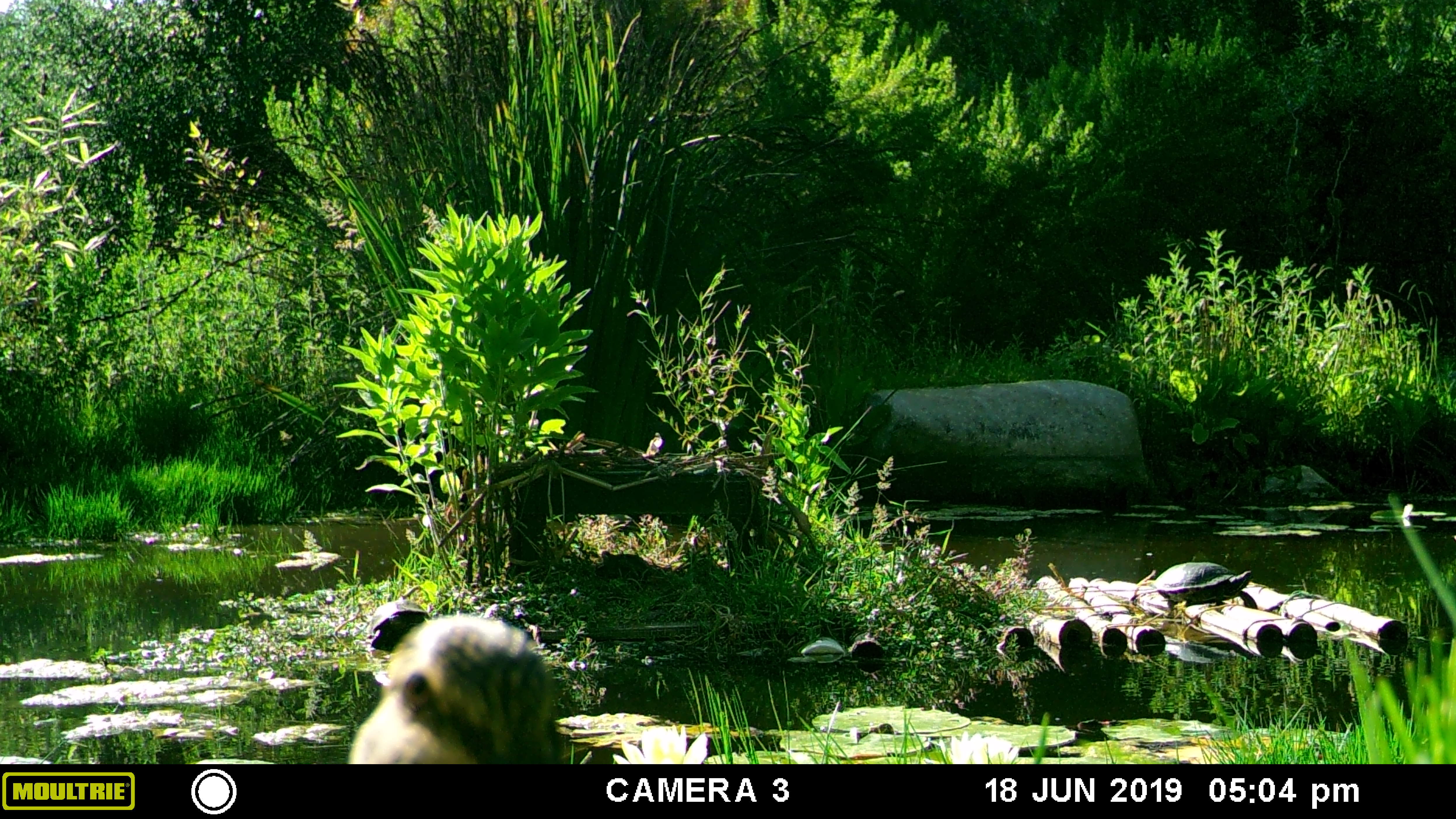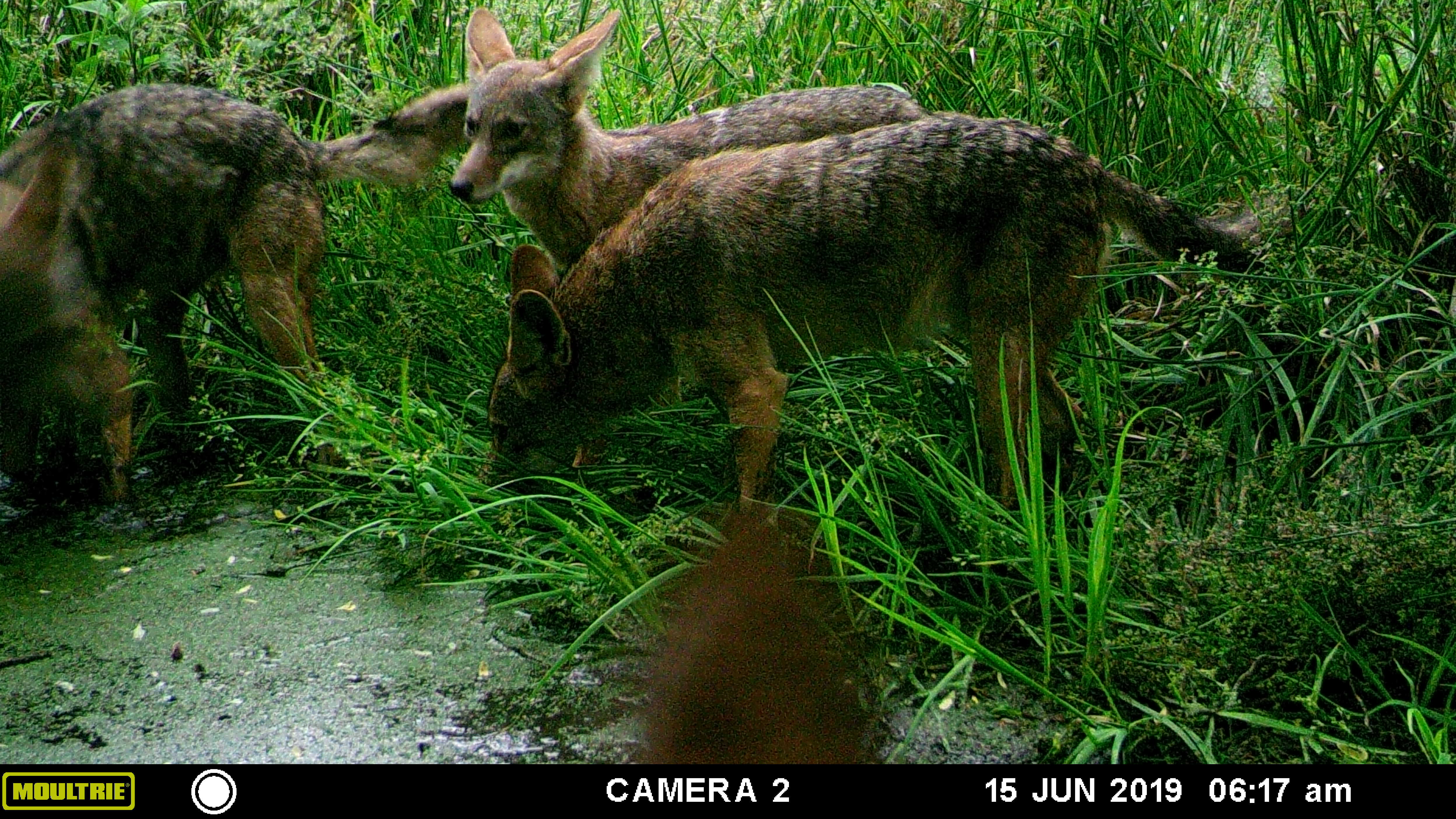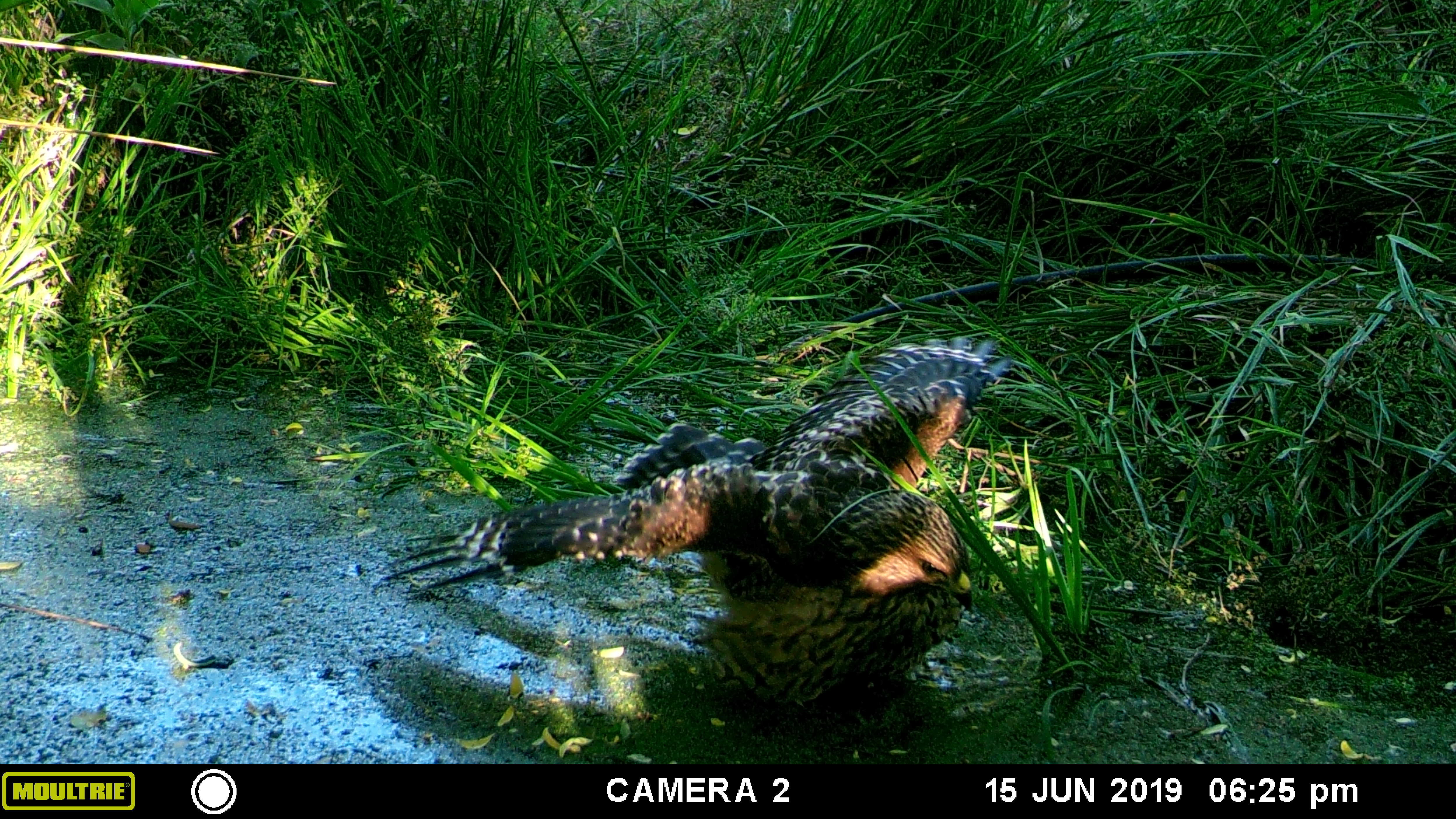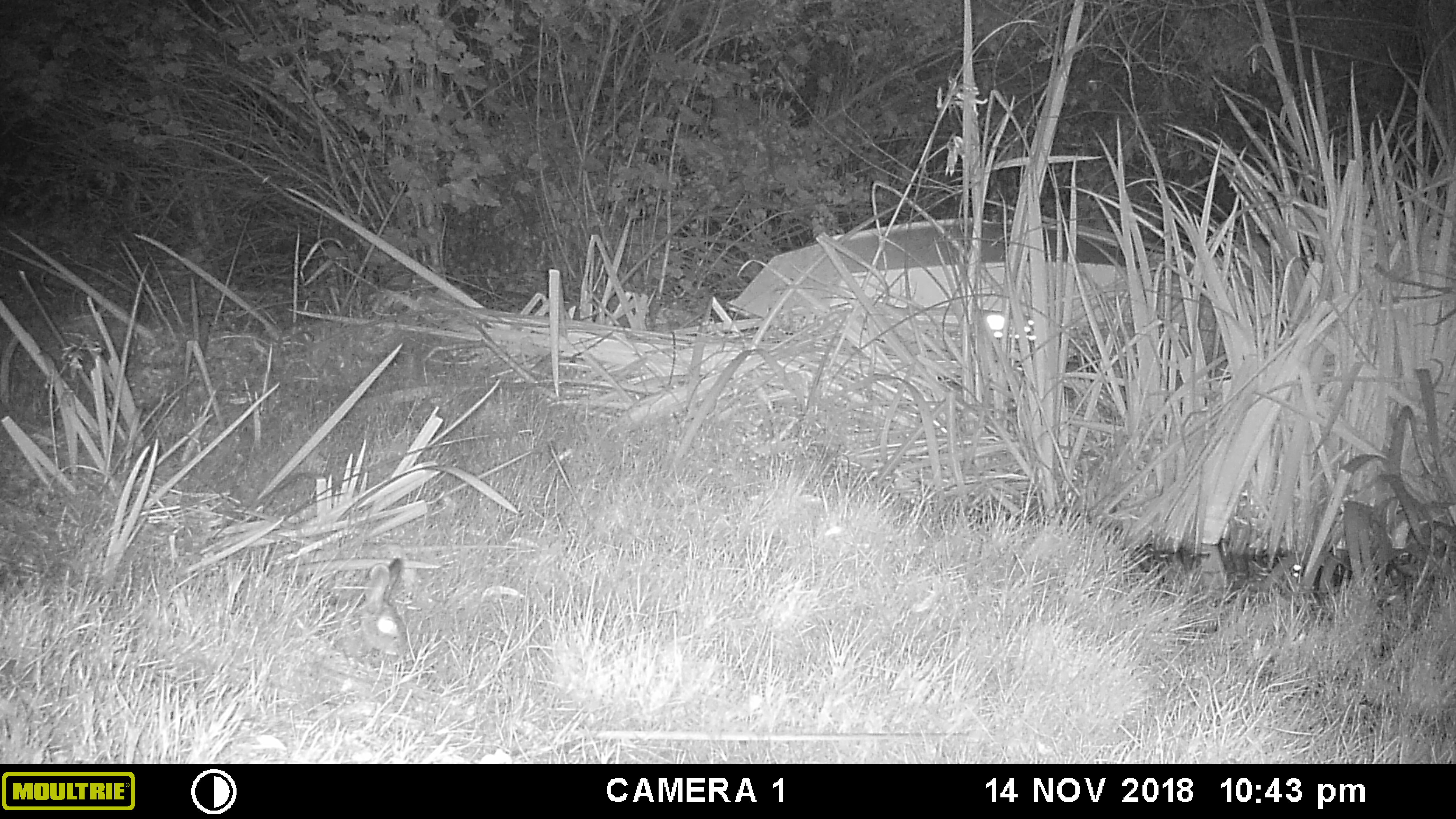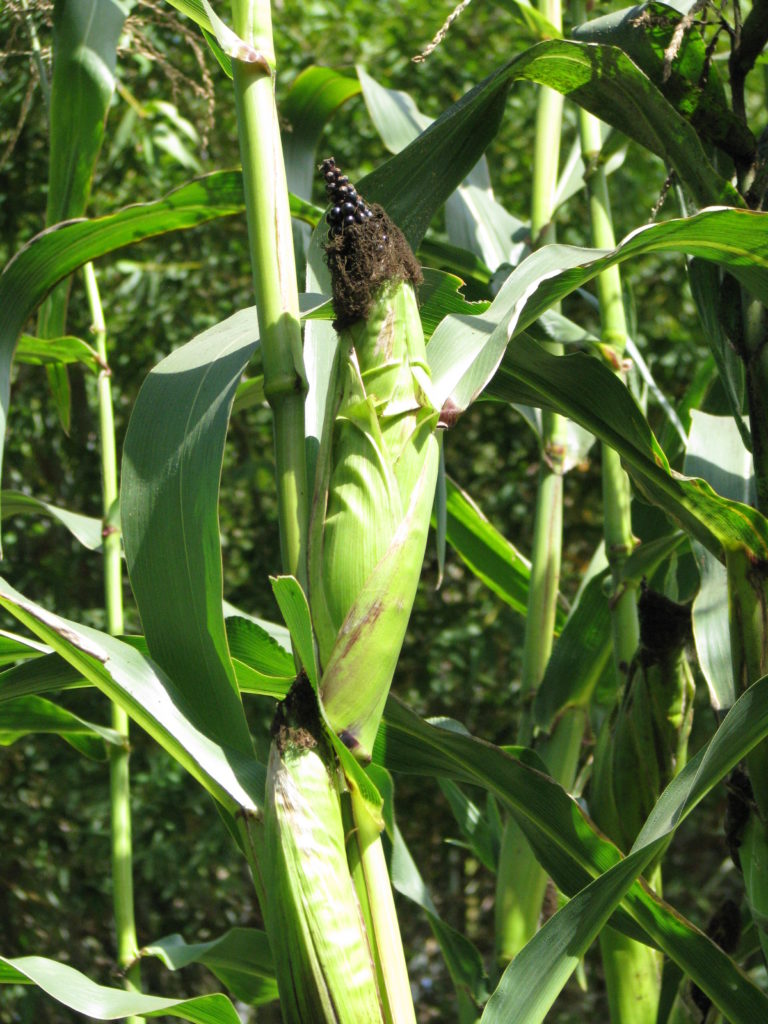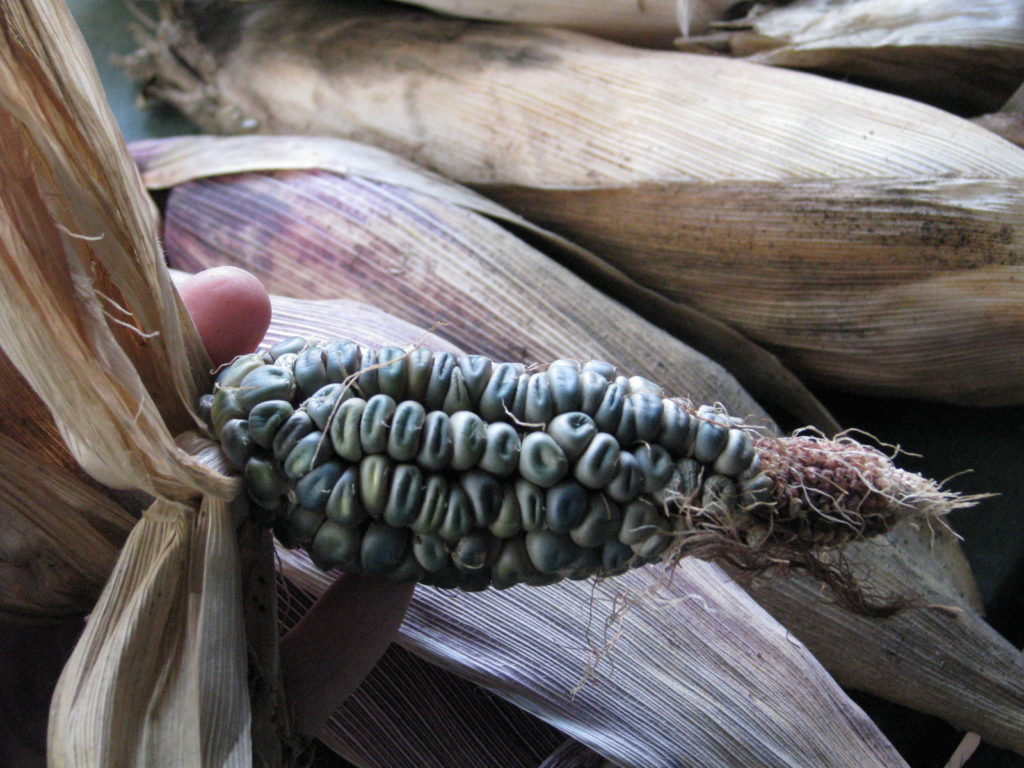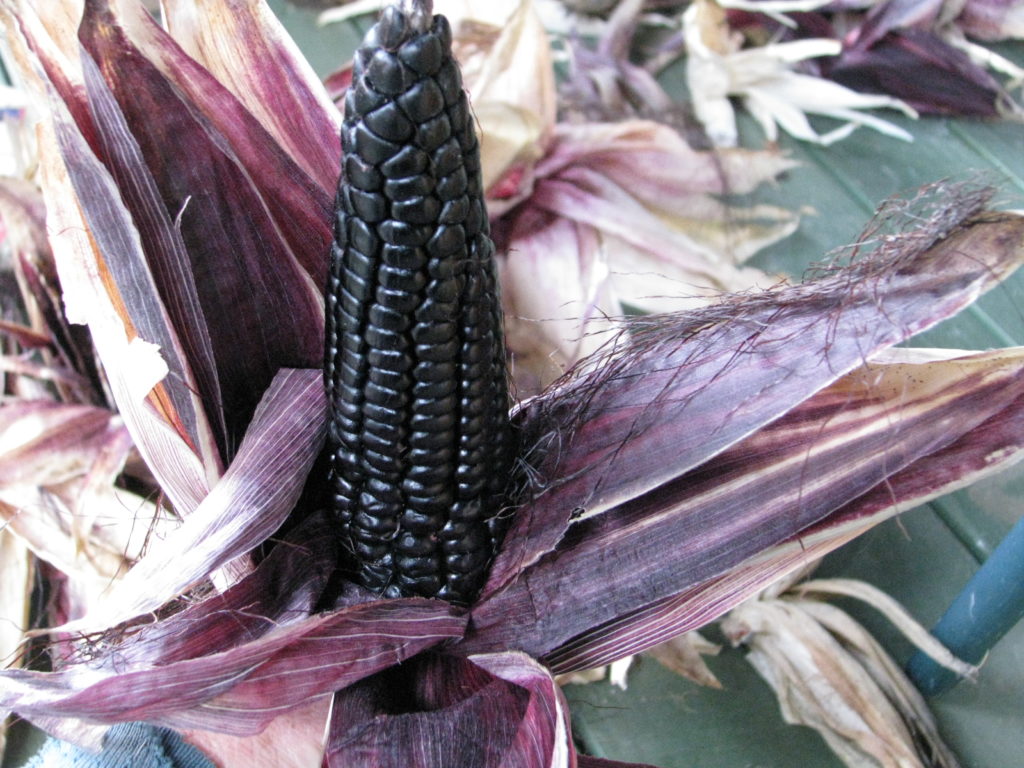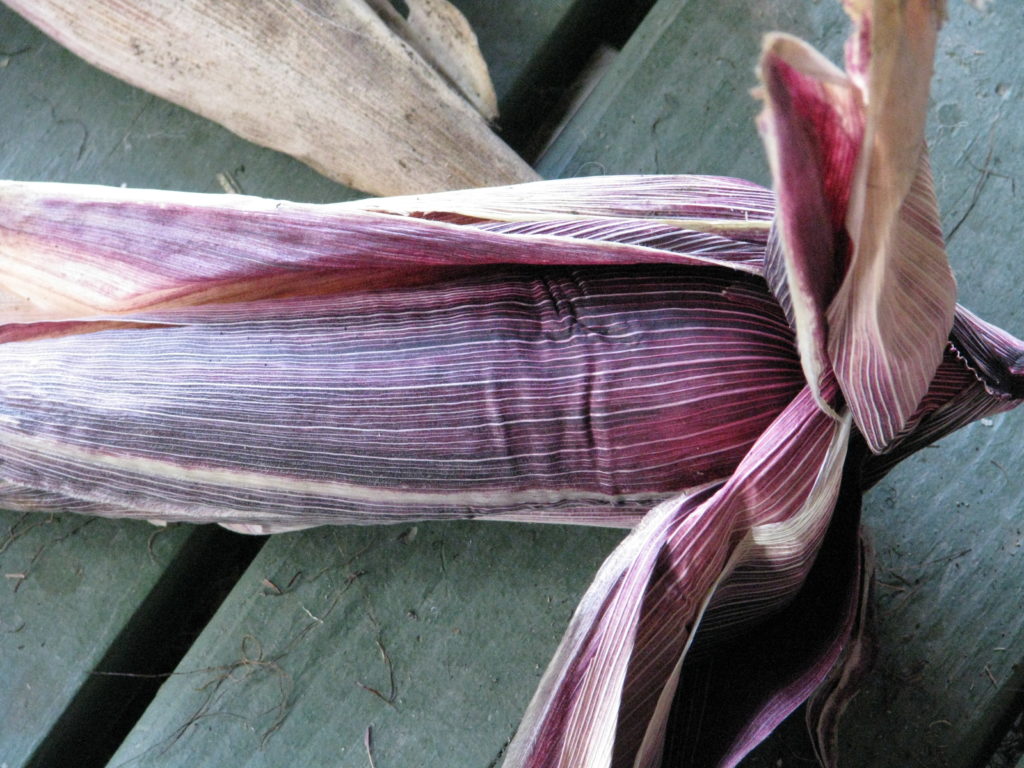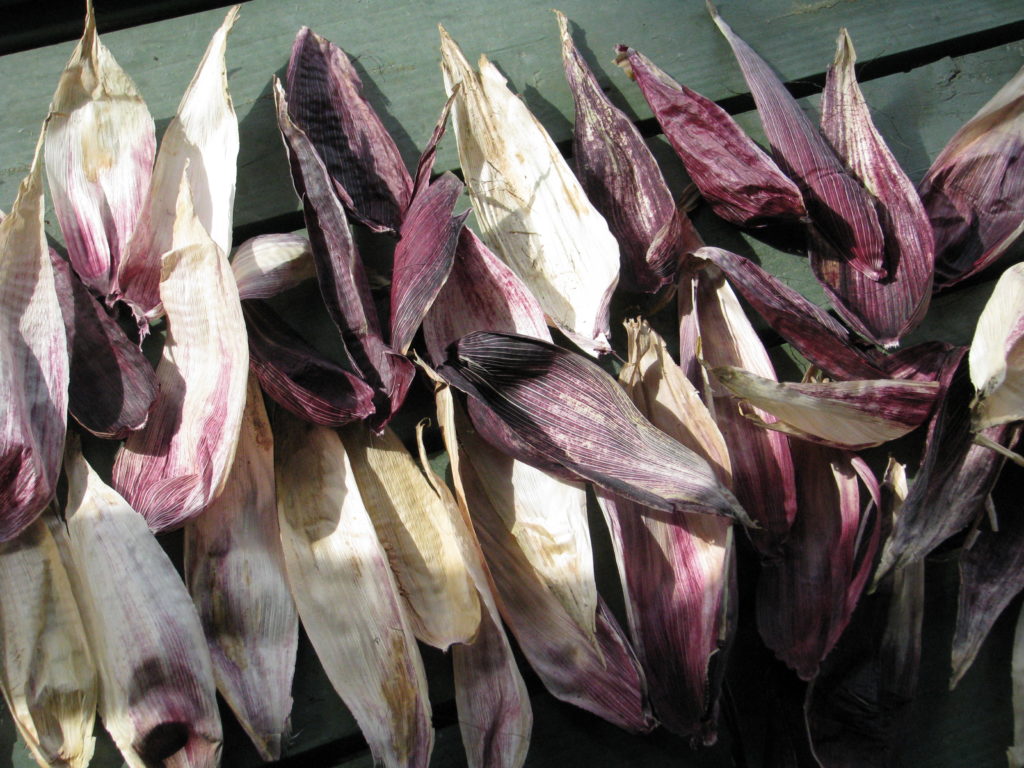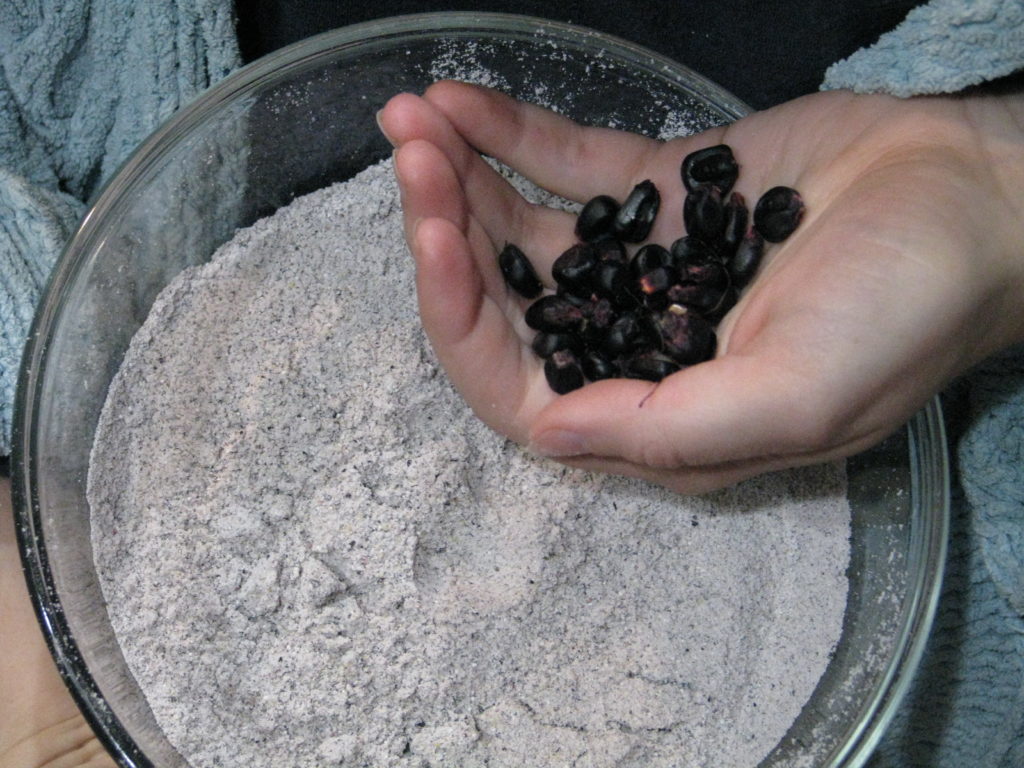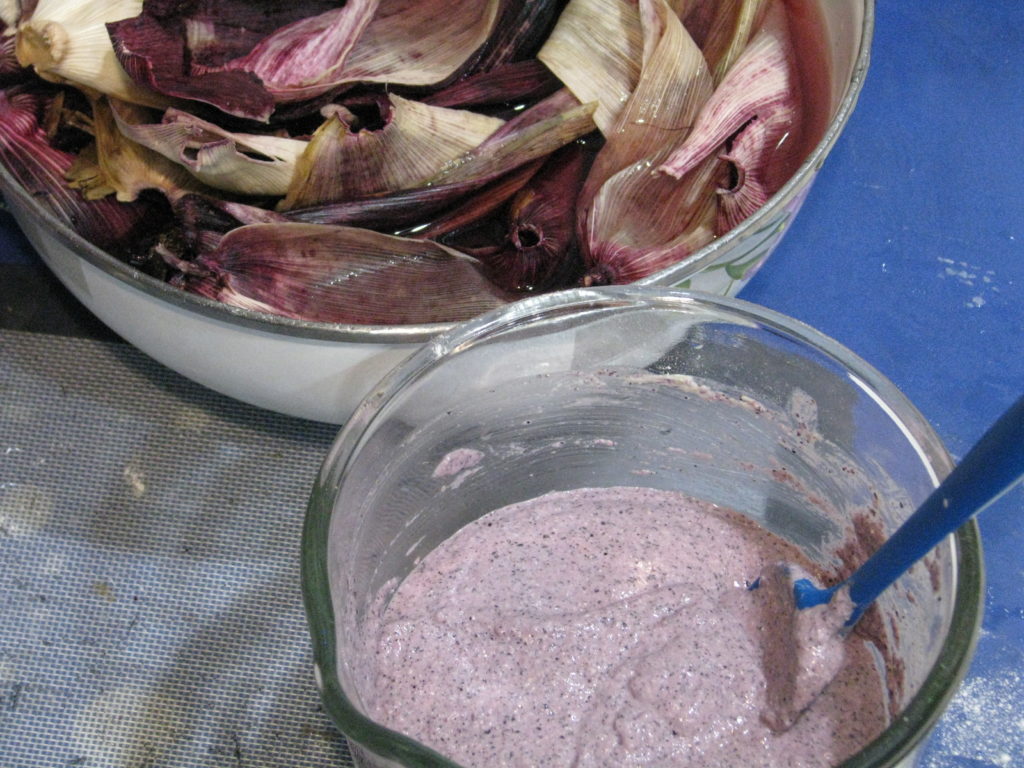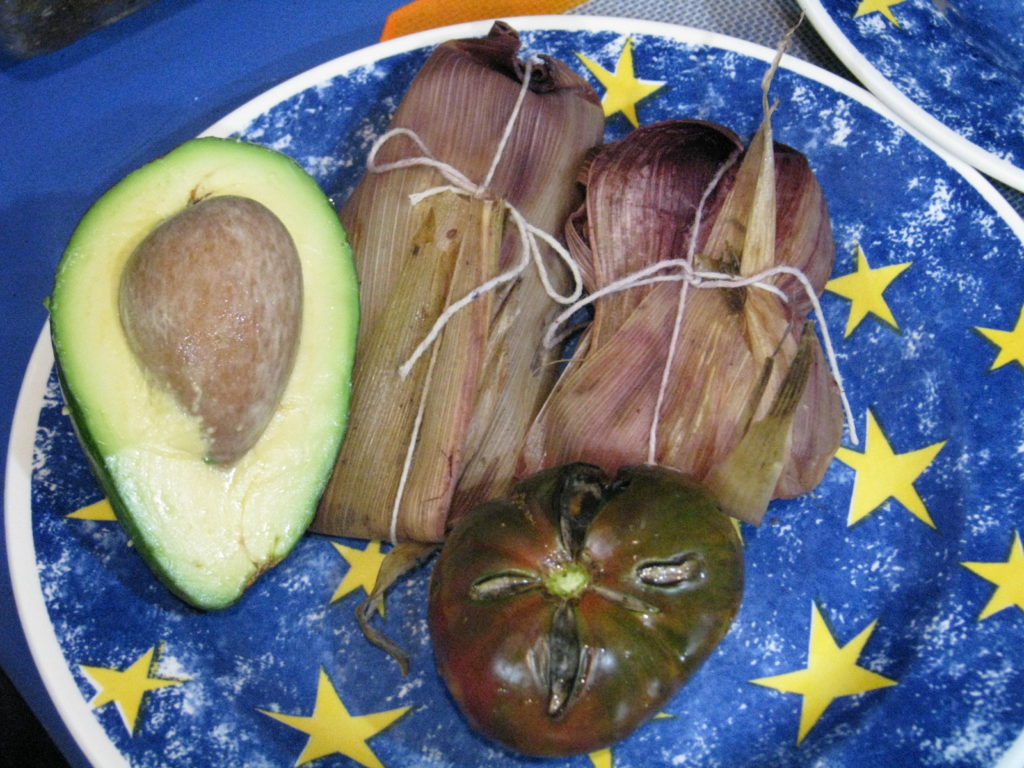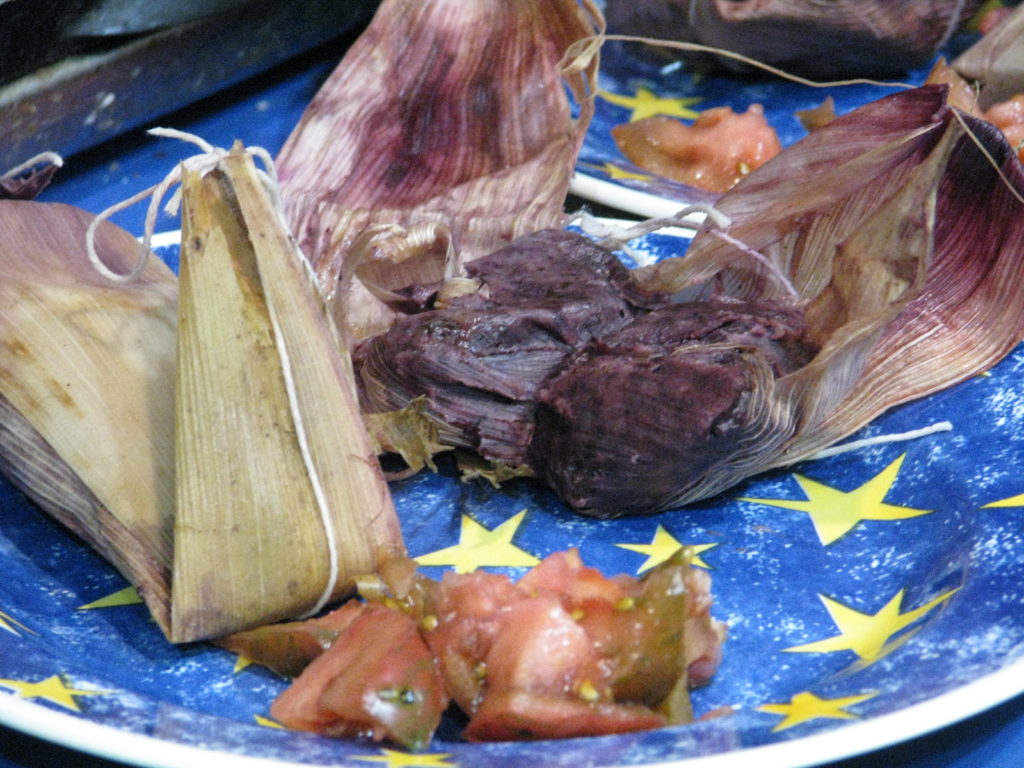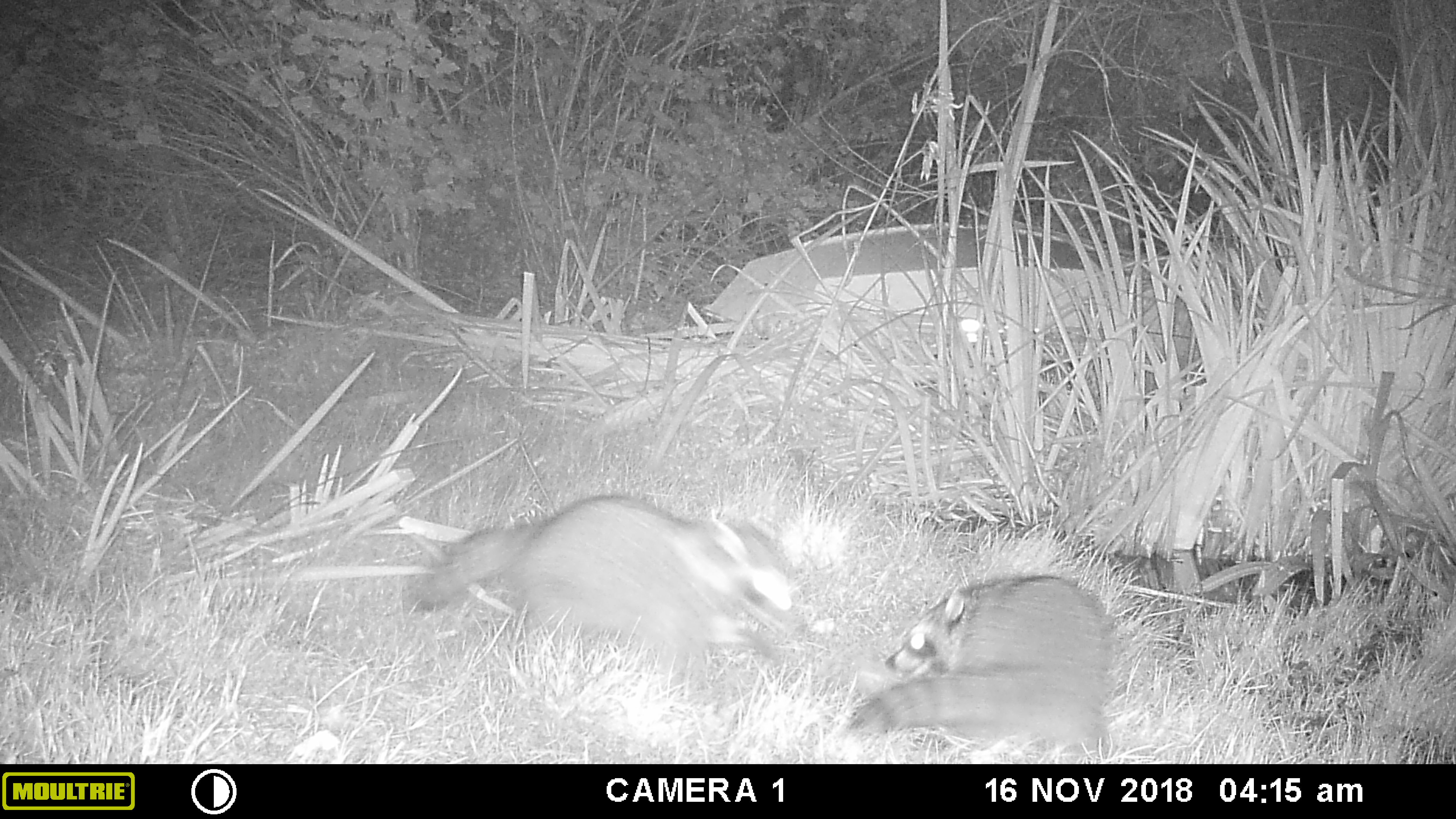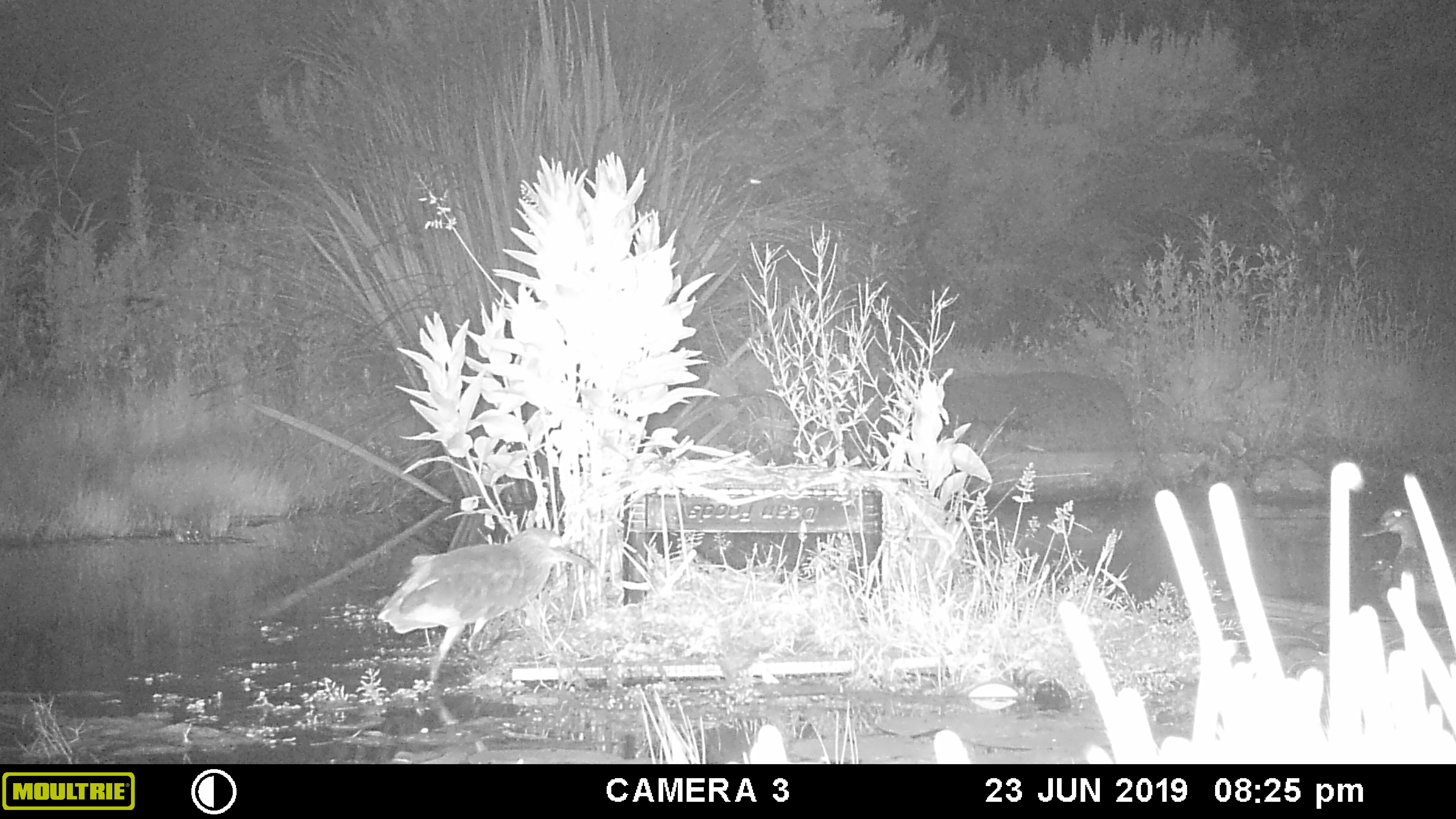-
What Food To Plant

At this time we are in month #2 of the Corona-19 virus quarantine. Many people are concerned about food shortages, and purity of what food they are eating. Suddenly the availability and the sheer cost of buying ‘organic’ food is not looking so sustainable. But what can you plant?
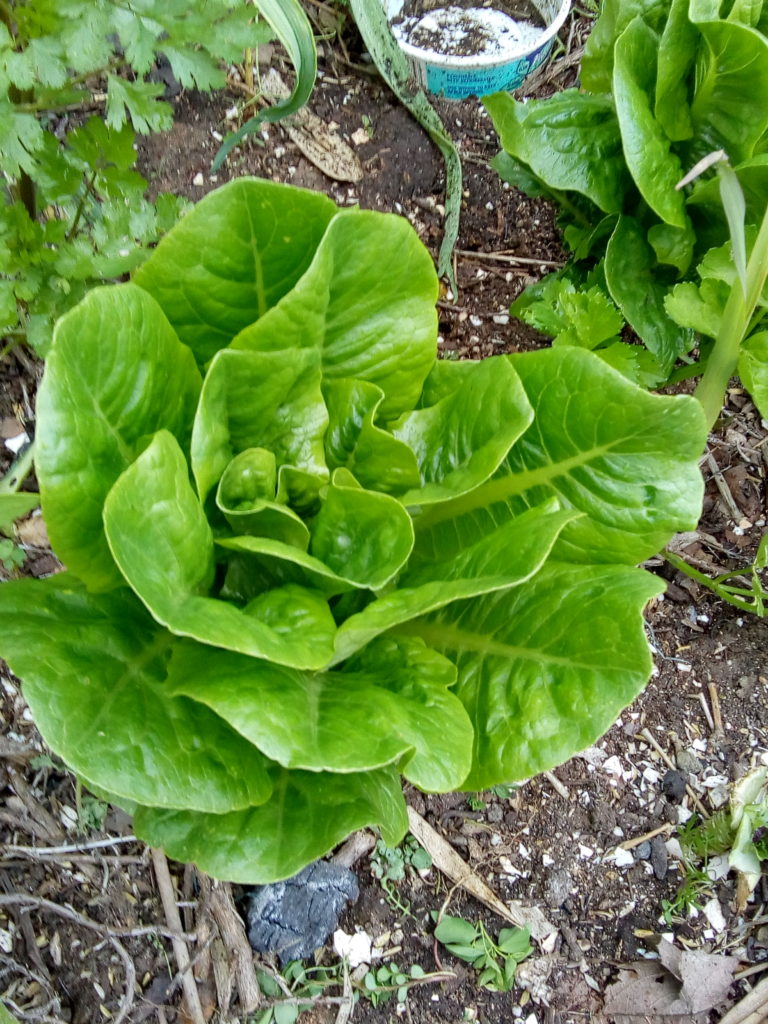
First of all, if you have an organic CSA (Community Supported Agriculture) or food stand near you, or farmer’s market with organic food, please buy from them as much and for as long as you can.
If you want to grow food, the here are some tips:

Zucchini, garlic, bush beans and cilantro allowed to go to bloom. Plant what you want to eat. That may sound simplistic, but if you don’t eat yellow summer squash, then don’t plant it. If you really don’t like kale but think that you should eat it, you may want to use the space for something you will eat. If you are thinking of perennial foods such as fruit trees, evaluate your space and also what fruit you really want to grow. Some things are just better off purchased from a farmer than given the space and water in your yard. If you use limes once a week, growing a big thorny lime tree in a small backyard doesn’t seem practical, but if you have half an acre its fine. See what its growing requirements are and if you have enough heat or chill factor or water to grow that specific tree.

Beans growing up stick teepees around a young plum tree. Plant enough for your family to eat. One or two strawberry plants aren’t going to give you the crop that you want, or will one been plant. If space is limited, then decide what you want to grow a lot of, and limit what you are growing per season to those crops.
What season is it? Don’t be fooled by what plants are for sale in box stores, hardware stores, and even nurseries which should know better. You can’t grow corn planted in the Fall: there isn’t enough day length or warmth for them to mature. Depending upon where you live, there are windows of opportunity for planting, down to here in the valleys of Southern California where you can plant something all months of the year. Which is pretty exhausting, actually.

Fresh beans come in ‘bush’ or ‘pole’ size. Pick what fits for you. Plant food that not only can be eaten fresh, but also those which can be dried, frozen, canned or otherwise saved for off-season. Its great to eat fresh salads, but plan for protein and flour sources as well. Grow pinto, black or other ‘dry’ beans, those which you leave on the plant until the pods dry and then you harvest and keep the beans. There are so many beautiful beans, with so many different textures and flavors! And they have great names, like Christmas Beans, Goat’s Eye Beans, etc. As most of these are tall-growing, you can put these beans on poles or other vertical supports and save room in your garden. Remember that legumes are nitrogen fixers, so don’t pull up the plant, cut it at its base to leave the roots and their nodules to feed the next crop.

Assortment of edible pumpkins and squashes on their way to the Food Pantry Don’t forget about pumpkins and other ‘winter’ squash. Kabocha is a Japanese winter squash that is delicious, not too ‘squashy’, and keeps its shape when in tempura or in a soup or stew. Delicata is mild and delicious. Spaghetti squash has a mild flavor and is fun to eat, but usually needs some pizza treatment to make it interesting. There are a lot of winter squashes with a myriad of flavors, sizes and textures. Pumpkins and other winter squash can keep for a month or more, depending upon their variety. If you have large ones, prepare to have to ‘butcher’, prepare, use and store a lot of food. Pumpkin pancakes, bread, soups, stews, baked pumpkin, pumpkin chai…. mmmm.
Yes, you heard me right when I said flour. Growing wheat is possible, but growing enough to make a difference, then separating the chaff and grinding it finely enough to use for flour is quite the endeavor. However, you can easily grow corn and make cornmeal. Hard corn is the same as those pretty ears you see at Thanksgiving. You allow the corn to dry on the stalk, and then separate the kernels from the ears (shucking), and store them as is, or put them in a high speed blender and grind them finely. You may need to sieve the results a few times and repeat to get a fine flour, or even use a mortar and pestle for some stubborn bits, but the flour is excellent and can be refrigerated or frozen.
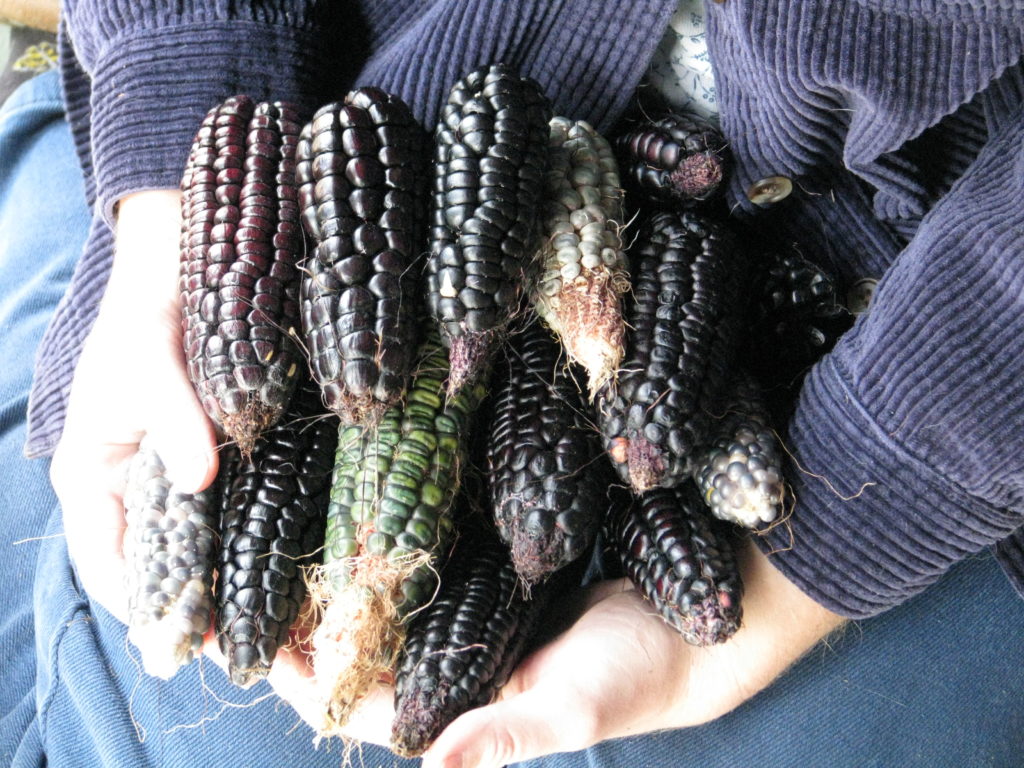
Colored corn makes colored corn meal, too. We’ve grown Black Corn and had dark purple corn bread, absolutely love blue corn meal pancakes, and this year are growing both Hopi green dent and red corn. Can’t wait for green cornmeal for Halloween!
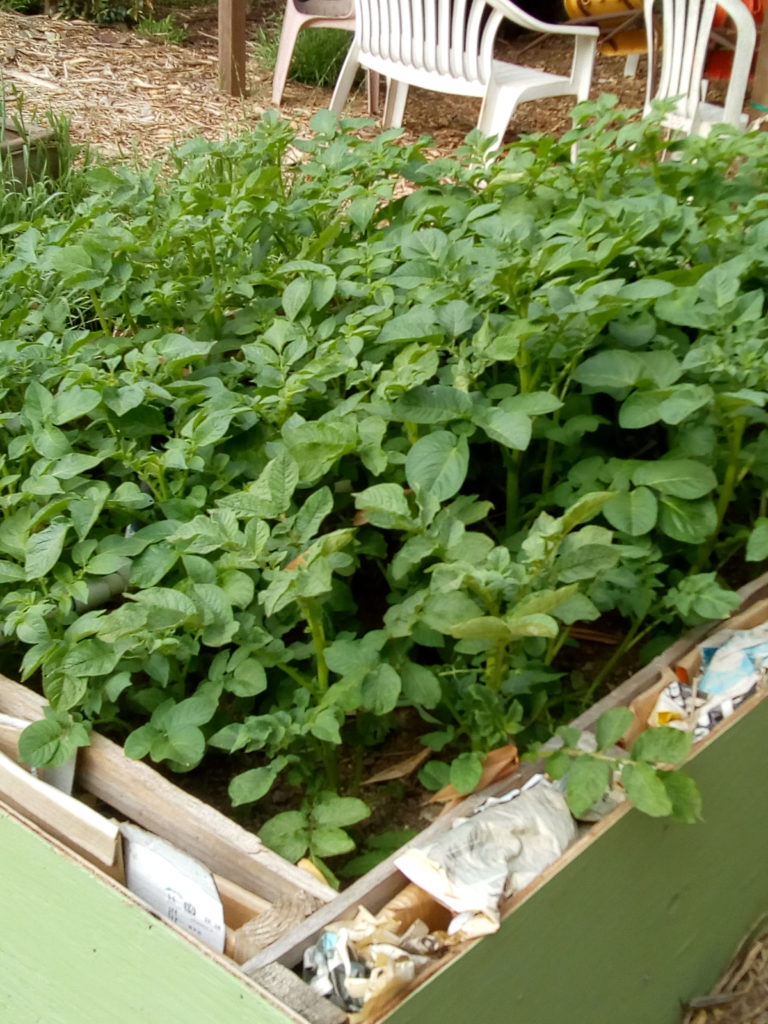
‘Irish’ potatoes grown in a cardboard-insulated pallet bed. Its filled as the plants grow. Don’t forget about tubers, either. ‘Irish’ potatoes, which don’t come from Ireland, grow from swollen stems and can be planted in containers and then hilled up around the growing stems. More potatoes will grow from the side stems. You can plant ‘trash can’ potatoes, or have a bed especially for them. These potatoes don’t mind some cold. There are white, yellow, red, blue, purple, red-skinned, purple-skinned… so many different potatoes with slightly different textures and flavors. I love the purple-inside variety; it makes great colorful mash!
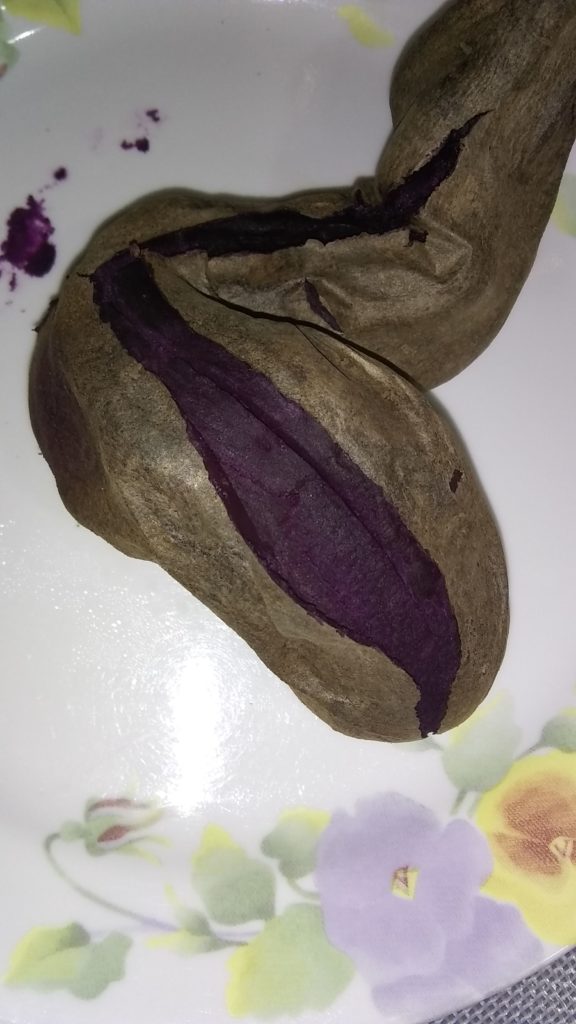
Purple sweet potatoes are AWESOME! Sweet potatoes and yams, which are basically the same thing, are a tropical plant best put in the ground when the soil and temperatures warm up. If you are iffy about eating sweet potatoes… grow your own and taste them without all that marshmallow gloop all over them. They are absolutely amazing. And their leaves are edible as well (not so with the ‘Irish’ type!! Those are related to tomatoes). There are colorful varieties of sweet potatoes as well, and they can certainly be grown in the house as a lovely house plant under the right conditions, and then dumped and eaten!
Don’t forget about growing herbs, not only that you can eat fresh such as basil, but those you can dry such as oregano and dill. Don’t forget medicinal herbs that you can make into tea whether fresh or dried, such as chamomile, catnip (it works as a pick-me-up for humans!), mint (anti-depressant and stomach soother), rosemary, and more. Perennial herbs can go anywhere in your landscape; annual herbs can have their own bed or be tucked in between your veggies as companion plants. Allow some herbs to go to flower to attract the tiny beneficial insects.

Cilantro going to seed. Excellent flowers for tiny beneficial insects, and seed for next season. If you suspect that your soil may be contaminated from a former agricultural or industrial business, such as a paint factory, that was on the land before your home was built, please have your soil tested for lead, chromium and arsenic at the very least.
Growing your own food is very rewarding, and well worth the work. Protect your food from hungry animals with wire, over and if necessary, under. Make sure the plants have regular water, so hooking up a watering system on a battery timer is a smart move for busy people. Place your veggies close to the house so you will run out and harvest when you want something. Make sure your site has enough sun even in the winter so that, if weather in your area permits, you can grow outside then as well.
Don’t forget that all of those veggie scraps can be saved and then used to make a really amazing broth before they are finally composted. The broth can be frozen.
Have fun with your veggies! Stay healthy! Best wishes to all of you from Miranda and me.
-
A Video Journey Through Finch Frolic Garden with Kaye Kittrell
We were visited in early November, 2019, by Kaye of Late Bloomer video blog fame. Come have a short virtual tour of our permaculture food forest in the Fall. Please visit Kaye’s YouTube channel, Kaye Kittrell | Late Bloomer Urban Organic Garden Show , to see more of her adventures in gardening. Also, please ‘like’ the video to show Facebook that you care! Thanks for watching.
- Gardening adventures, Heirloom Plants, Permaculture and Edible Forest Gardening Adventures, Planting, Recycling and Repurposing, Seeds, Soil, Varmints, Vegetables
Corn Stalks as Pea Stakes

Our corn grew to a ginormous 10′ height this year in our raised pallet beds. The roots of corn are very sturdy; we usually cut the stalks above the roots, and allow the roots to stay in the ground to decompose. Often they are there a year later, still holding the soil.

Miranda being consumed by corn and zucchini. As it is October and, despite the 95 degree F. temperatures and hot, dry Santa Ana winds that are so typical of Fall here in Southern California, it is time to plant winter crops. Peas are the top of the list to plant. There are many types of peas. Some are valued to be eaten as pods when the peas inside haven’t matured. Some – and these are my favorite – produce juicy round peas that can be shelled and frozen for use all year. Some produce a lot of tendrils, and these along with the new leaves and shoots are eaten in salads and stir-fries, and are very attractive. There are also cowpeas, which are really beans that enjoy warmer weather, so not a candidate for winter crops. Best of all, peas and the rest of the legume family set nitrogen in the soil. They have a symbiotic relations ship with certain bacteria that must live in your soil for this to happen. The plant harvests nitrogen out of the atmosphere, and stores it in nodules on its roots. When the roots die, either from the plant being cut back or dying, the nitrogen is released into the soil in a plant-usable form. No need for chemical nitrogen fertilizers.

King Tut peas are good eating before and after the peas form in the pods. The peas are green. 
King Tut flowers are gorgeous. One of the problems I’ve had growing the tall peas is having the best supports for them, especially in raised beds. I never seem to have tall enough posts, or the posts fall over and chaos ensues. This year we decided that we’d already grown our pea supports: our corn.
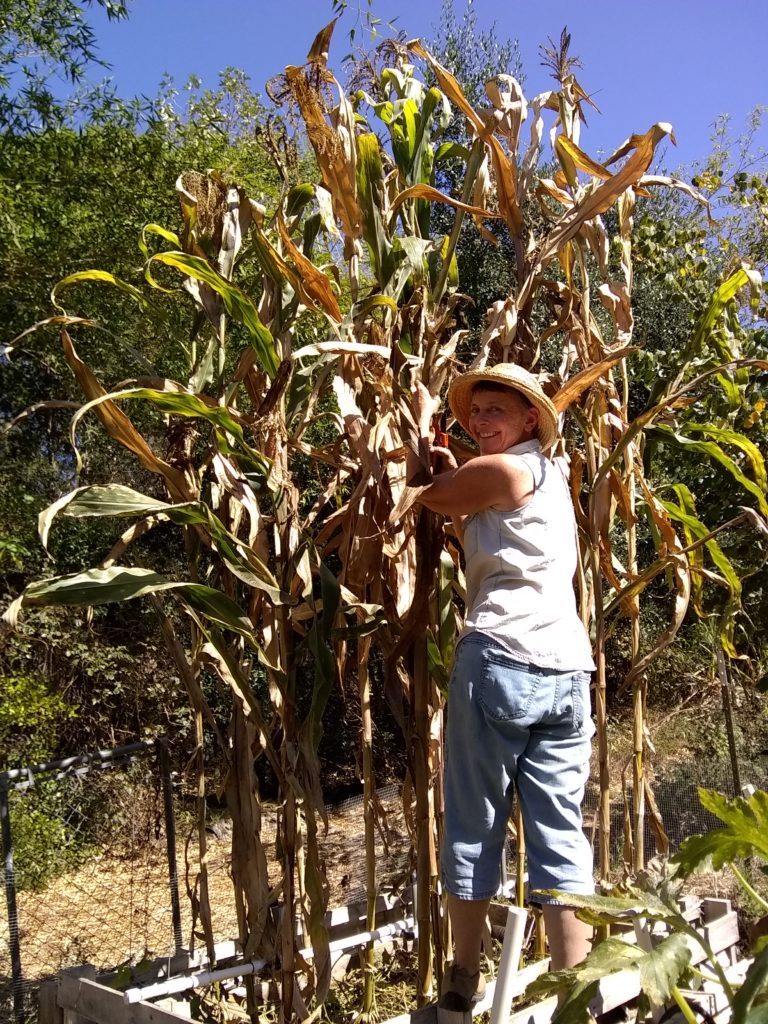
Trimming a few feet off the corn. I’m 5’3″ tall, for comparison. I have a phone in my back pocket and my pants are loose, so please don’t think I’m that saggy! We cut the corn stalks down to about 8 feet; above that the stalk was a little weak, and the stalks would be tall enough for our purposes. Then we planted vining (not bush) peas in and around the base of the corn. We had a lot of success with King Tut peas last year, which had beautiful purple pods (but green peas), so we opted for more of these in this bed.

Miranda planting around the corn. We left some of the cut sweet potato vines we’d just harvested from this bed to help hide and protect the pea seeds, and to return nutrition back into the soil. Now the peas are growing rapidly, and we’ll be able to train them up the sturdy, straight corn stalks with the help of some twine. When the peas are done, we can either use the stalks all over again for another climber, depending upon how they last over winter, or we cut the corn and the pea plants at the surface of the soil and put the whole pile into a compost pile, or into another raised bed. Corn is a hungry plant, so the pea’s nitrogen-fixing capability will help restore fertility to that raised bed. Remember that we use no fertilizer other than in-bed composting using kitchen scraps, plant cuttings, manure from our hens, and leaves, and anything else that will decompose. The beds are being watered by salty well water, too.

Baby peas are shooting up quickly. To help deter mice we sprinkle red pepper flakes over the seeds, and Miranda makes up a spray bottle full of hot sauce and water and sprays the beds in the evenings.
Re-purposing is so fun, especially when the result is better soil, healthier plants, and less work for us!
-
School
I haven’t been a busy blogger for the past year, and that is not for lack of interest or input. I’m always shooting photos and writing posts in my head. The difficulty lies in finding time to write. I’ve gone back to college.
As I’ve traveled through my life as a female I’ve been very fortunate in my jobs and by proving myself through lots of hard work. A year ago I came across a new barrier that I hadn’t expected: age. I have discovered that once mid-fifties is paired with the female sex, doubt arises as to your competency and abilities. As all of my formal education, other than my permaculture design certificate, was experienced in the 80’s, and even though all the subsequent years have had excellent work records in the same fields, I’ve been stereotyped. People want current credentialing. With looming increased life expectancy I will need to work for a long time, I need to do everything I can RIGHT NOW before I age any more.
In the Fall of 2018 I enrolled at Mira Costa College, an hour’s drive from here, in their horticultural program. I was fearful of being the odd-ball oldest one in the class, of my struggle to memorize as quickly as I used to, of being in class with students who grew up with computers, of school itself. I hated school the first time around.
I had been the awkward, chubby, shy wallflower who was in the mentally gifted programs, but held a low A or B+ average. I loved choir, drama, and working on the school newspaper. I disliked socialites and their casual cruelty. Still do, although I’ve forgiven them.
I attended UCSD, UC Berkeley, and then Mesa College, and although freeing in many ways the experiences made me realize that I was certainly not cut from the commonly accepted fabric. I would always be slightly on the outside looking in. School was something to endure.
I am now in my fourth semester at Mira Costa, shortly will turn 58, and I love it. I found that I don’t have the social issues from before. There are such a range of ages and backgrounds in my classes that sometimes I’m not the oldest one. I have been the only female in a class, and that was okay. I have found only one person who objected to my being alive (that I know of), and I don’t think I’ll encounter her and her loud mouth again. And I just don’t care about how she acted. Its her problem, not mine. In most horticultural classes the students bond, and then when they see them again in another class they are friendly. Socially, its a far better experience than when I was younger.
The learning has been amazing, but I work extra hard to memorize and to retain what I’ve learned. I know that I’ve lost about half of what I’ve memorized, and only repetition will bring it back. That’s on me. However, the brain work is excellent and I know that I am warding off future brain failure with every assignment.
I am working, volunteering, keeping up the garden and attending 3 classes, so life is very busy. My daughter has taken up my slack and has been working in the garden keeping it going far more than I have. She has three jobs, so between balancing them and caring for our animals and property she is just as busy. She has made me some meals and frozen burritos to take for dinner at school as well. Its really nice to be taken care of a little. My mother was the last person to do that when I was a teen.
Challenges with technology have not been an issue. I have felt comfortable taking tests on the computer when required and have enjoyed the completely online classes. There have been technical glitches, but there have been support channels through the schools and with my fellow students that have helped me through them. And I have helped others. The professors have been great.
What I’ve been learning I’ve been putting to use immediately in my consultations and at Finch Frolic Garden. The more I know, the better I can help.
The interesting part of this endeavor has been the reactions from my peers. Many who are my age or slightly younger are amazed and delighted that I would do the unthinkable… go back to school at an age when most are looking towards retirement. It seems to them as if I was moving to a different country without understanding the language or customs for an immersion program. I receive delighted support from them. Some are appalled and treat it like a sentence that I have to serve. “How much longer do you have to do this?” I have one friend who thinks its nonsense, a waste of my time. But then from him I not only receive support, but a subtle ‘old fashioned’ repression because I’m female although he’d be appalled to think he did. Most people just don’t understand that, without a steady income for as long as I can earn it, and judicious savings, I might run out of money and become a burden to my children long before I can shuffle off this world. Longevity is inherited on my mother’s side. I have many friends, and know many others, who are single women from ages 50 to 80 who have a very, very low income and who rent casitas or rooms. They rely on the tolerance and stability of the landowner for the roof over their heads, and if that changes they may be outpriced to find another accommodation in the town they’ve lived in for decades. They have gone minimalist, having to get rid of belongings because there just isn’t a place to put memorabilia. Some work part time at as many jobs as they can find just to stay ahead. Many receive supplemental food from the Fallbrook Food Pantry, especially if they have to pay for medications. It is a nightmarish situation where instead of being cared for as their bodies fail them in so many ways, they are completely self-reliant and have to get themselves to the DMV, to the doctor, to the grocery store, to the bus, to the lab, to a specialist, to the pharmacy. Its something American should be ashamed of, the abandoning of its mature generations. And no one would think of hiring them.
What I realized when I began working with volunteer groups years ago is the amazing experience and abilities of the retirees who now had time to contribute towards a cause they believed in. Grey hair and wrinkles make we who are aging all look similar, but these people are survivors, movers and shakers. These people are constantly reading, vibrantly involved, often continue to have their own businesses, have survived the death of spouses and children and siblings and schoolmates. And now I am one of them.
Going back to school has given me a purpose, as I am a goal-oriented person and can feel cast adrift if I am left without a path. I am enjoying the challenge and accepting my short comings, and realizing that I have been guilty of stereotyping the younger students as well. Many are second language learners in a foreign country trying to write technical papers fluently in another language. Many have served in the military and are looking for kinder, gentler occupations such as growing plants. Many are juggling families, work and school. Some have had horrific health issues. And many are going through the agonies that I went through as a youth, feeling awkward and ugly and stupid, and hoping there is a place where they’ll find acceptance at the end of the tunnel.
Two years ago I read a Facebook post from a former school mate of my age who had gone back to school to receive certifications that would improve her job and income working with students with disabilities. I thought, “How amazing that she’s gone back to school! That’s a horror I’ll never repeat.” I praised her for her success. Then, as karma has it, when faced with being rejected for several jobs because I was of a certain age, and my schooling had happened decades before and somehow didn’t qualify anymore, the idea of going back to school was the only thing left to me. Because of my friend’s testing the waters first, I realized that I could do it, too. I am hoping that this lengthy blog might inspire others to do the same: Its better the second time around.
So when in a crowded room of thirty students the guest lecturer asks if anyone would have issues with taking a quiz through their smartphones and his eyes end up and linger on mine as the oldest one in the class, I smile back. And help the student next to me. And when I overthink a problem and screw up I ask the people around me, who are always…always ready to help. And I bring in extra vegetables and fruit when I can because so many of these students have no food security and many are living in their cars. Something unthinkable back in my school days, although I’m sure now that it happened. And I do homework crosslegged on my bed just as I did thirty years ago, but this time with a laptop amongst the papers, and I’m good with it. And I qualify for student aid and scholarships which help me get through it all, which is amazing. And my daughter bails me out when my laptop gives me troubles. I am a lucky woman.
And showing my student ID card has given me some good discounts long before any Senior discounts will kick in!
Think about taking classes, even just for fun, or for pass/no pass. The school programs need students to keep them funded, and what a better way to help yourself and help young people by ensuring their future educational options by supporting and attending them yourself? Who knows, you may still find someone to flirt with, just like the old days.
- Animals, Bees, Integrated Pest Management, Natives, Other Insects, Permaculture and Edible Forest Gardening Adventures, Predators, Quail, Reptiles and Amphibians
Native Insects and IPM

A tiny wasp. Honeybees are not native to North America; however, we have an amazing number of underappreciated, ignored or sprayed native insects. Here in Southern California where the lack of rainfall has created a landscape called the Elfin Forest, the canopy is short, the animals are small and many of the insects are very tiny. If you take a careful look at clusters of small blossoms you will see tremendous air traffic. Besides the honeybees, there are butterflies, moths, and bees, wasps and flies that range in size from the large black carpenter bees and shiny green June bugs, to predatory wasps no larger than a speck of dirt on the back of your hand. These are your companions. They are the unsung workers responsible for a large percentage of pollination and invasive insect control. They in turn are food for the other policing creatures of your garden, the small birds, lizards, frogs and toads. And newts, salamanders, dragonflies and damselflies… I don’t want to leave any of these marvelous workers out.
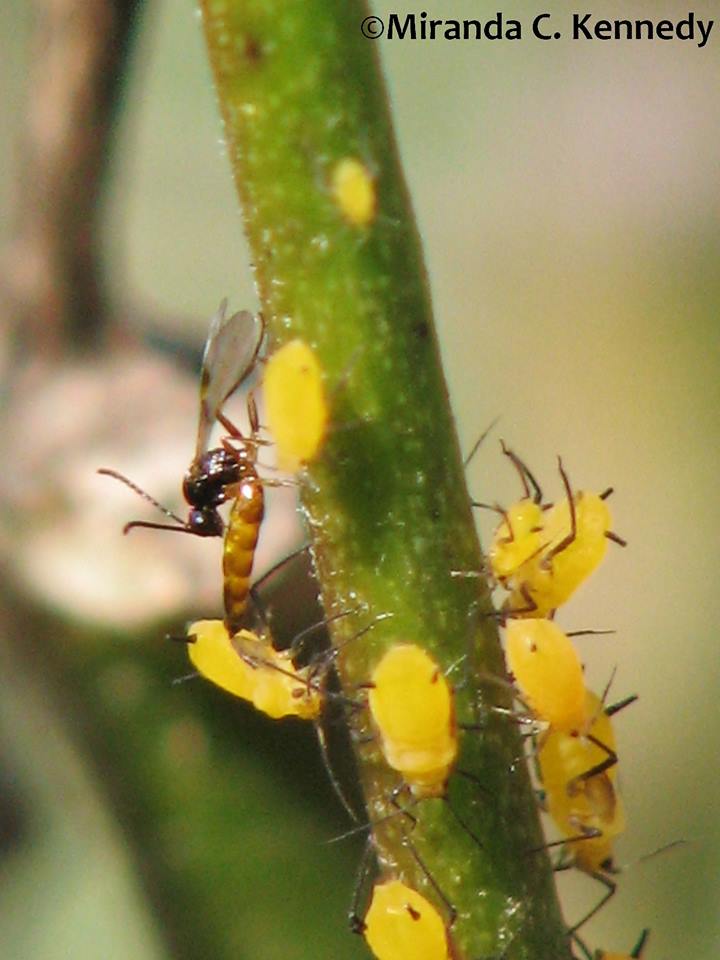
A native predatory wasp laying eggs in oleander aphids on milkweed. These tiny insects need small clusters of flowers to feed upon, and planting to cater to the native insect population wherever you live is vitally important. It is just as important as building good microbial communities in the soil.
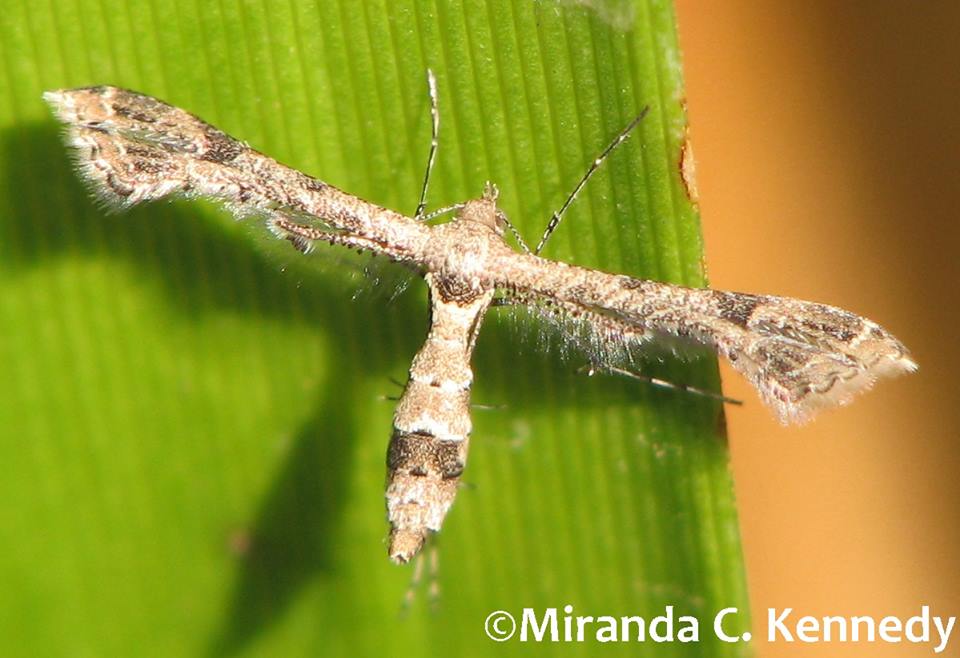
A plume moth. Here is a video – a shaky one taken with my phone as my camera is in for repair – of the tremendous activity around our blooming apple mint. The mint is next to our vegetable garden, and pollination is never a problem. Throughout our property we have blooming plants, mostly natives especially of course in our permaculture Zone 5, and they are feeding thousands of native insects – and honeybees – as well.
Please be patient with the video (it picks up my pulse!) and enjoy our August garden.
-
Our Native Insects
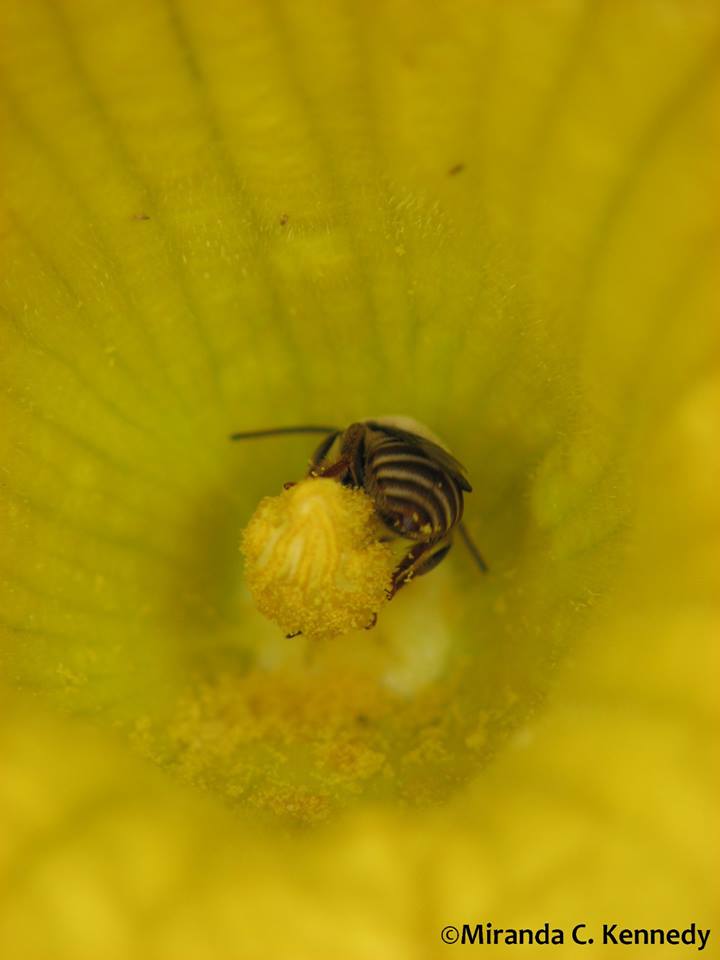
Squash bee Honeybees are European. There are no native honeybees in North America. What we have instead are thousands of bees, wasps and flies that may not make honey, but are responsible for pollination.

Native wasp laying an egg in an aphid. Here in dryland Southern California there are over 300 species of native bees just to San Diego. Here we live in an elfin forest of chaparral and other similar plant communities. Due to the lack of rainfall, alkalinity of the soil and water, and therefore smaller plants and flowers, many of our native insects are small as well. Some are the size of a fleck of dirt on your hand. Many of these little wonders predate on the pest bugs in your garden.

Tiny wasp. Most of these insects are solitary rather than colonial like the honeybees. They live in the ground, in hollow twigs or holes in dead wood. Leaving habitat around for them, or creating a native bee house, or buying one such as SoloBee’s, will encourage them to stay and feed in your yard. Another way would be to plant plenty of native plants around your property, especially those with clusters of small flowers such as buckwheat (Eriogonum sp.) and ceanothus. These tiny insects need a tiny landing pad, a little sip of nectar they won’t drown in, and plenty of food sources close together. Allowing some of your mint, carrots, dill and basil to go to flower also gives them a food source. On a warm day look carefully over a patch of small blooms and you’ll be amazed at the activity flying around the flowers.
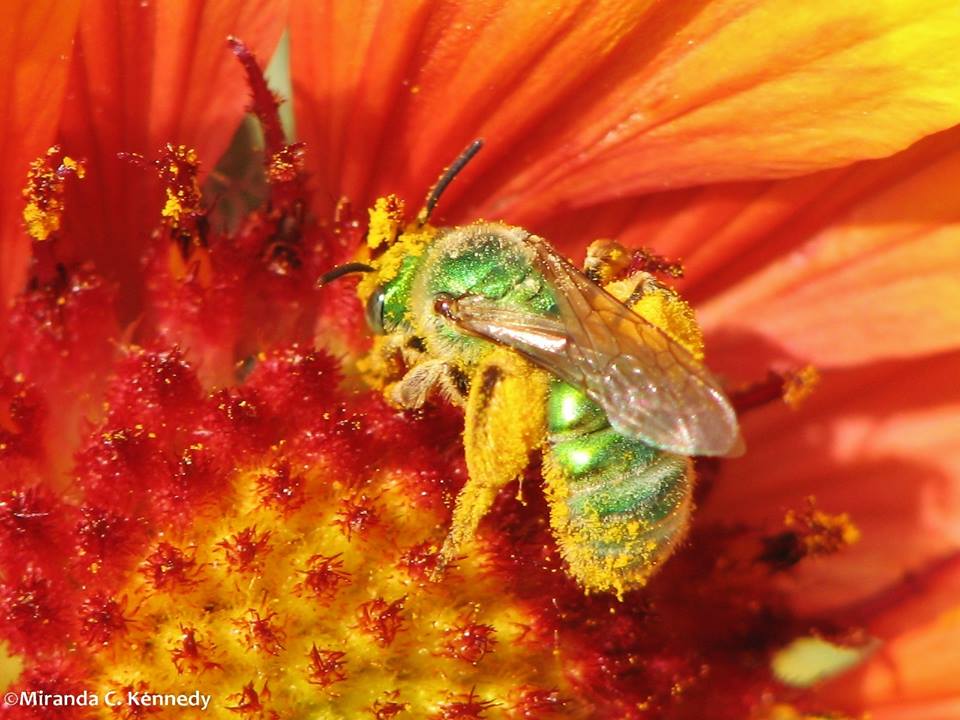
A species of Metallic Green Bee If the non-native honeybee’s existence is being threatened, think about what effect pesticides – particularly systemics – as well as other chemicals, environmental factors and native plant clearance effects our indigenous little fellows and gals.
Stop using harsh chemicals outdoors, plant and maintain native plants, and take a very close look at tiny flowers. Helping the little ones helps all of us.
See more great insect photos under ‘photos’ on our Finch Frolic Garden Facebook Page.
- Breads, Gardening adventures, Health, Heirloom Plants, Hugelkultur, Permaculture and Edible Forest Gardening Adventures, Planting, Recycling and Repurposing, Seeds, Soil, Vegan, Vegetables, Vegetarian
Growing Cornmeal


Sweet corn is a wonderful summer treat; although you can freeze it, is never as good as picked, steamed and eaten within hours. However hard corn can be dried, ground and stored for use throughout the year. Some varieties that aren’t super sweet can be eaten fresh or left to go hard for grinding. Miranda and I have fallen in love with growing and grinding colored corn. They are not just for Thanksgiving decorations anymore!
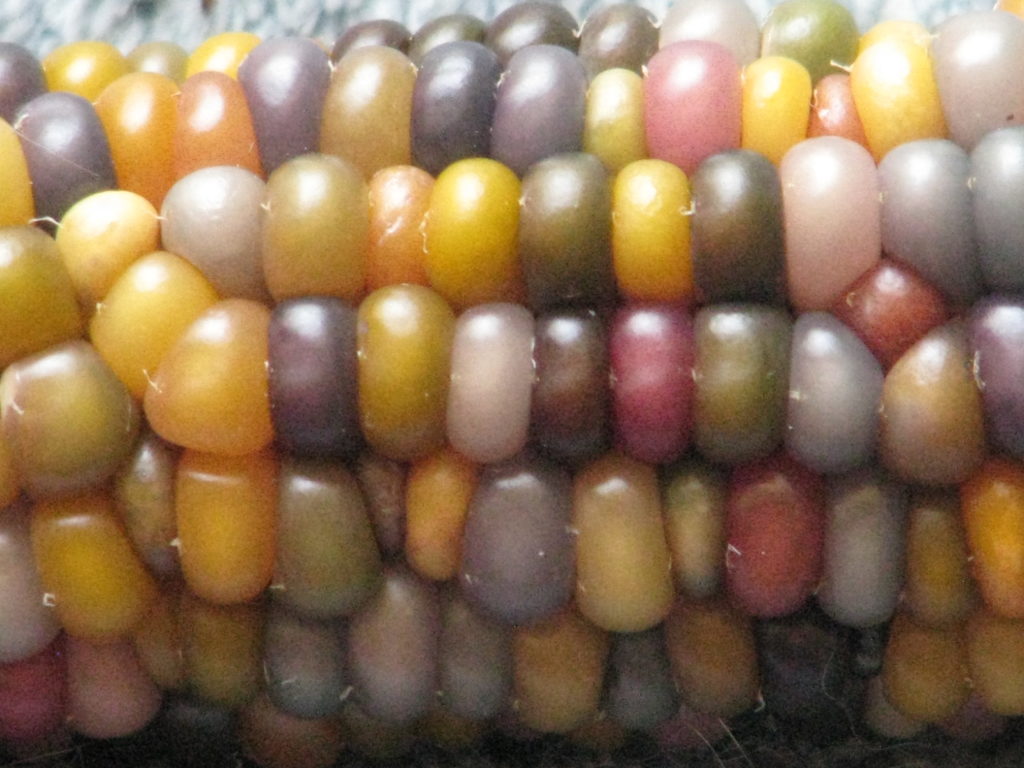
We’ve grown Indian corn and small cute popcorn. We’ve also grown the lovely Glass Gem Corn, with its opalescent pastel colors that was all the rage for the last few years. It made a lovely lightly colored cornmeal.

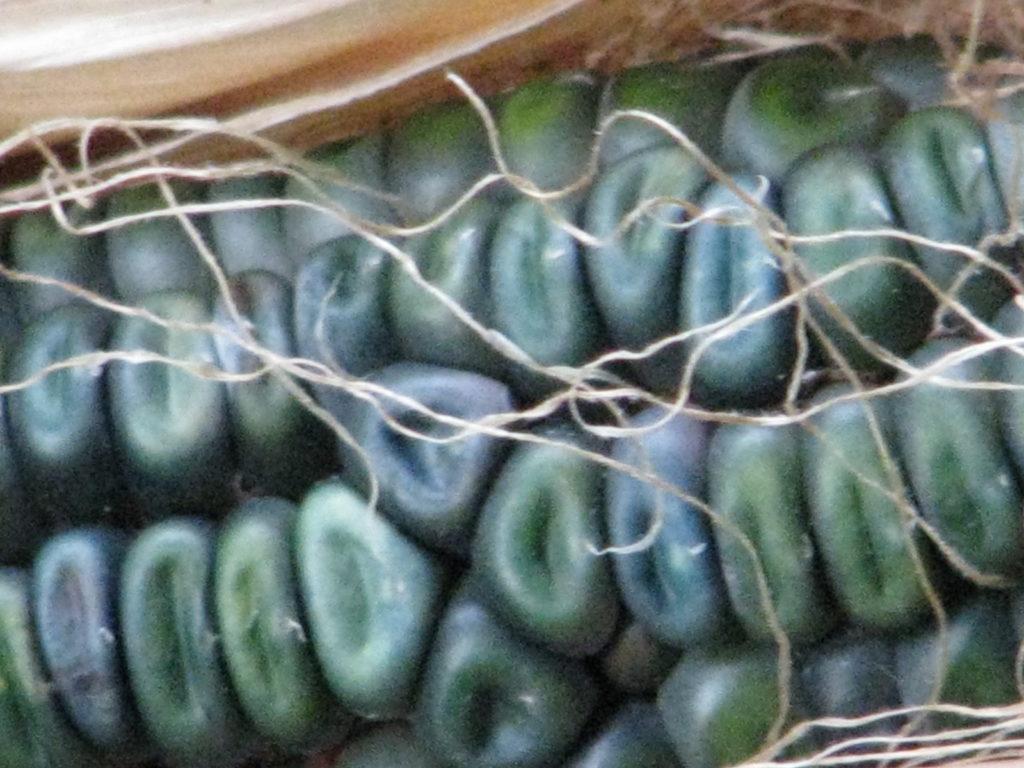
Last year we planted Oaxacan Green dent and black corn. Wow. The black corn was the most successful, growing about 12 feet tall.
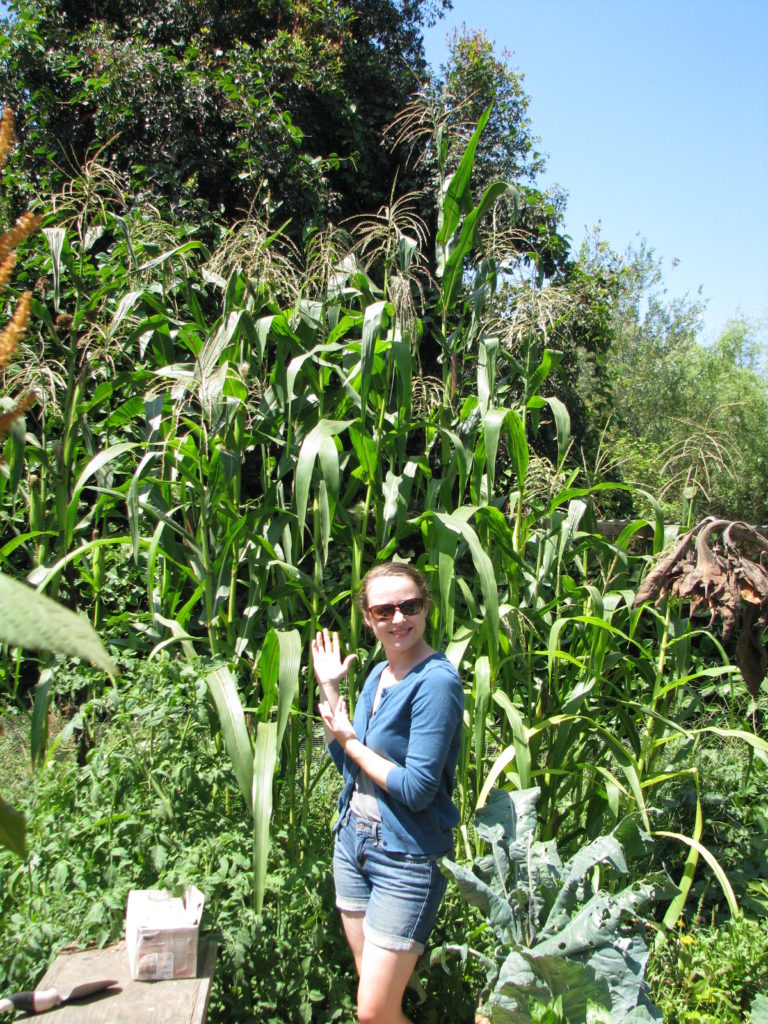
The black variety was Maiz Morado or Kulli Corn, from Baker Creek Heirloom Seeds. It had many aerial roots, which were black- actually a very deep purple- growing from several nodes.

The black corn began to peek out from the husks and it was magnificent.
We harvested the ears and let them lie on our warm porch out of the sun to finish drying. The stalks we tied up for Halloween and Thanksgiving decorations, and then they went into filling a raised bed.
When it came time to shuck the ears, we marveled at the color of the kernels. They were spectacular; so were the green dent.
Even better, the inside of the husks were colored, too. We dried them and saved them for tamales.

For New Year’s Eve, we stripped the dried kernels from the cobs; not a difficult process and one we could do in the evening after dinner while watching old Time Team reruns on YouTube.
When ground, the black corn meal was a light purple. We use our VitaMix’s special grain grinding container, but a normal one would work as well.
For tamales I guessed at a recipe, mixing half corn meal with half flour, a little baking powder and some vegan butter, and vegetable broth to wet. The mixture was very elastic and can certainly use work, but it was tasty and worked well to hold the filling together. The cornmeal turned a medium purple color when wet.
Soaking the husks to soften them was a treat, as their red color leached into the water making it look like wine.
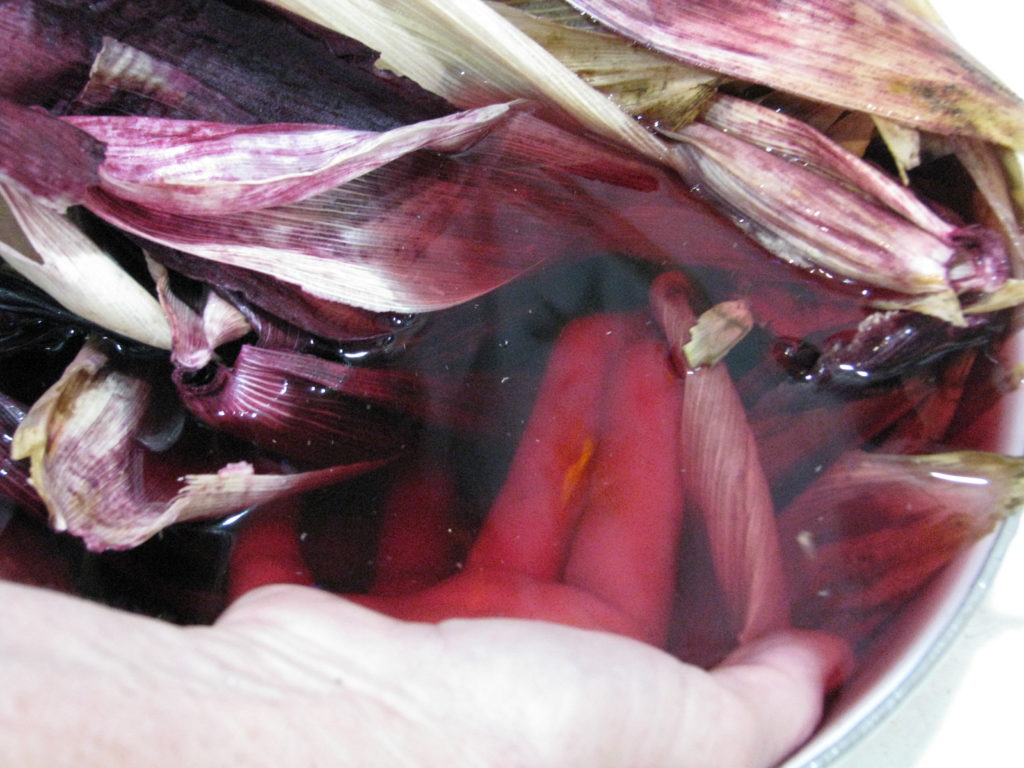
For fillings I couldn’t help but go with the whole purple theme, so I steamed one of our Molokai purple sweet potatoes which are an amazing purple as well.
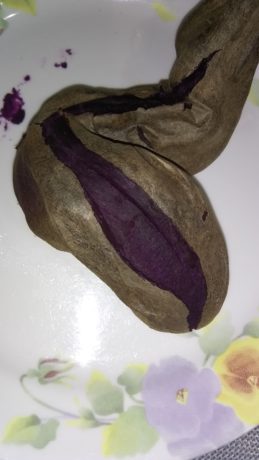
I also cooked up some of our frozen beet greens with onion, and used those two together with vegan cheese. A second filling was black beans mixed with cumin, oregano and our pickled carrots and jalapenos, and sweet corn with vegan cheese.

Miranda and I got such a kick out of all the colors, especially the purples. We couldn’t wait until they were steamed, which took about an hour and twenty minutes.
When the tamales were opened we were in awe. The black cornmeal had turned a very deep purple, and it was only half and half with flour! It was awesome. We enjoyed them with guacamole and, of course, our last Paul Robeson tomato because you just can’t have too many purple foods on your plate. The photo of the open tamale doesn’t do it justice.
We store the cornmeal in glass jars in the freezer. It makes excellent cornbread and cornmeal biscotti, as well as polenta and fried cornmeal mush. How fun and reassuring it is to use our own unsprayed, non-GMO cornmeal.
Coming up we’ll be planting black corn again, and a large patch of green dent as well; I want to see what pure green cornmeal looks like when cooked… maybe for Halloween dinner?

-
Always Time to be Grateful
Today, on Thanksgiving Day, Nov. 22, 2018, as on every other day there is so much to be thankful for. For waking up, for food, clean water and shelter, for friends and family, for the opportunities to volunteer and the ability to do so. this year at age 57 I returned to school, taking Horticulture classes at a local junior college to update my skills and knowledge. I overdid it with four classes, so my time management skills have been as severely tested as my ability to memorize and learn new concepts. Without my daughter’s help it would be less successful.
Finch Frolic Garden continues on and as we close the garden to the public for the winter, it remains open and thriving for wildlife seeking clean water, shelter and food as well. For my birthday, Miranda bought me a game camera which has recorded some interesting life in the bog area of the pond. Now we know why the irises are always smashed. The two glowing orbs from under the boat are just reflections, not a monster, but the ones from the pond are invasive bullfrogs. The juvenile red shouldered hawk has been walking around in the bog several times. Pond life is full of surprises!

MOULTRIE DIGITAL GAME CAMERA 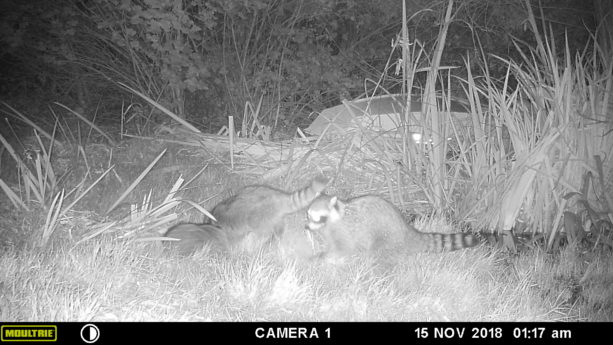
MOULTRIE DIGITAL GAME CAMERA 
MOULTRIE DIGITAL GAME CAMERA 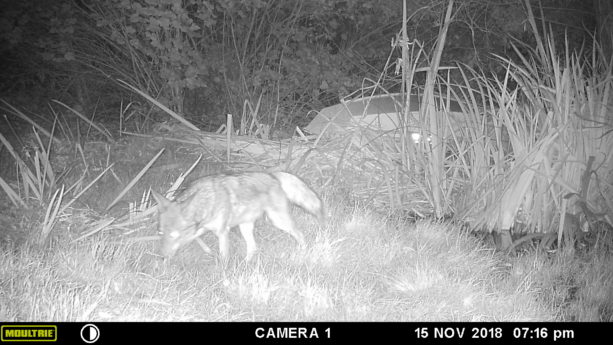
MOULTRIE DIGITAL GAME CAMERA 
MOULTRIE DIGITAL GAME CAMERA 
MOULTRIE DIGITAL GAME CAMERA We didn’t burn this go round with wildfires. We are maintaining, and therefore are so grateful for everything that we have, even the troubles that we have as they are not as severe as so many other’s. I am especially grateful to have a permaculture habitat so that these animals can survive.
Have a wonderful Thanksgiving everyday.
https://youtu.be/xcStEV4QiUE
-
We Host the Smallest Bats in the United States
 Our seven year-old chemical-free food forest habitat became the release site for an adorable pair. Two young rescued brothers that had been cared for by Cindy, a Project Wildlife/SD Humane Society bat team volunteer needed a safe, comfortable, food-rich home.
Our seven year-old chemical-free food forest habitat became the release site for an adorable pair. Two young rescued brothers that had been cared for by Cindy, a Project Wildlife/SD Humane Society bat team volunteer needed a safe, comfortable, food-rich home.  These two were Canyon bats, the western pipistrelle (Parastrellus hesperus) which are members of the smallest bat species in the United States. Their wingspan is at longest 8″, and their furry brown bodies are only about 6″ long.
These two were Canyon bats, the western pipistrelle (Parastrellus hesperus) which are members of the smallest bat species in the United States. Their wingspan is at longest 8″, and their furry brown bodies are only about 6″ long.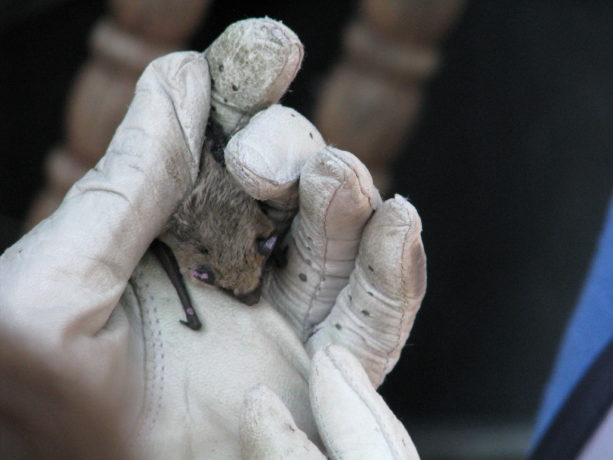 These insectivores are crepuscular, meaning they feed around sunset and dawn rather than during the night. They are also not colonial bats, but are often on their own eating the mosquitoes, beetles, small moths and flies around your home. Females will usually bear twins, rare for a bat, in June, and live either by themselves or in a small maternity colony. Here in October, these two little bats were from an early summer birth and were more than ready to get out of the rescue flight cage and be off on their own.
These insectivores are crepuscular, meaning they feed around sunset and dawn rather than during the night. They are also not colonial bats, but are often on their own eating the mosquitoes, beetles, small moths and flies around your home. Females will usually bear twins, rare for a bat, in June, and live either by themselves or in a small maternity colony. Here in October, these two little bats were from an early summer birth and were more than ready to get out of the rescue flight cage and be off on their own. 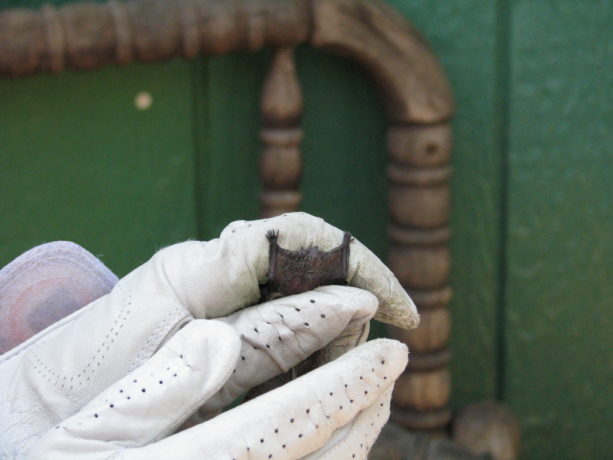
They were carefully allowed to crawl up into a bat house that had been hanging empty for five years. It was facing east so as to warm in the morning, and protected from the hot afternoon sun. The inside of the bat house had rough textured wood so the very tiny little feet had texture on which to grab. We made sure than there were no containers such as buckets or nursery cans facing up; many young bats fall in and can’t get out.

It was close to our chemical-free unlined pond for easy bug access at dining times, and which has enough open space for swooping across to get a mouthful of water. They may return to the bat house, or they may fly off to find a rocky nook or tree crevice that they like better, but we sure love them being released in our garden.
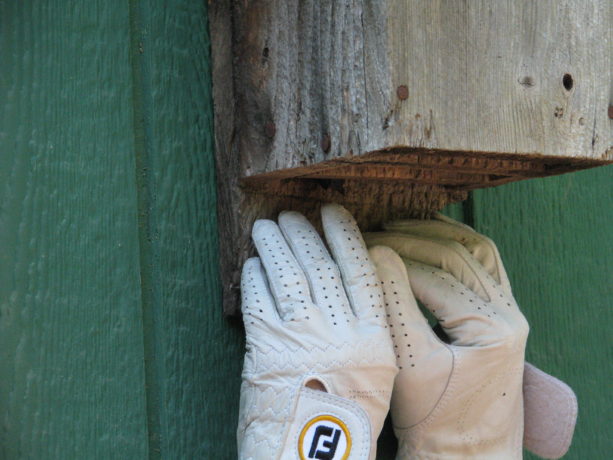
In permaculture, all the animals: bats, lizards, frogs, birds etc. are vital parts of the integrated pest management system as stated by pest control st paul, and also contribute to soil fertility with their droppings, sheds, feathers, leftover meals and bodies. When you spray for insects you kill the food supply for these animals which has effects throughout the food chain. Gardens should be alive with native wild animals and insects, and not reduced to only a scavenging ground for invasive rats and domestic cats.
At dusk or early in the morning keep an eye out for bat species in your yard. They are working to keep the insect population in control.
Project Wildlife | San Diego Humane Society
San Diego County is one of the most biologically diverse areas in the United States with the greatest number of endangered species. People from all over the county bring wildlife patients to Project Wildlife for care and we are proud to be a resource that our neighbors can depend on in order to coexist peacefully with wild animals.
- Animals, Bees, Gardening adventures, Grains, Health, Heirloom Plants, Herbs, Other Insects, Permaculture and Edible Forest Gardening Adventures, Planting, Seeds
Growing and Eating Seeds
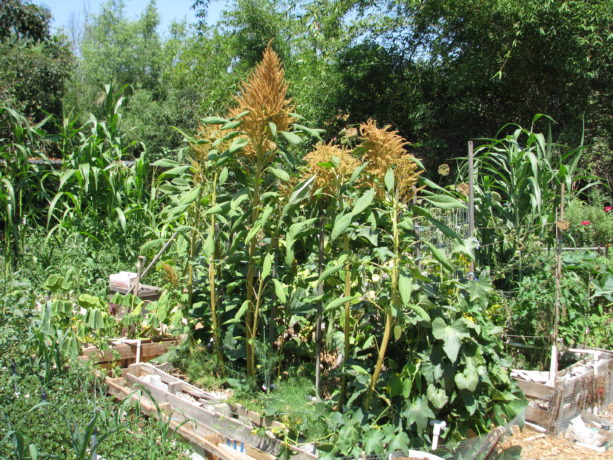 We eat seeds everyday. Grains, nuts, beans and, well, seeds, are all seeds. A seed is an embryonic plant covered with a seed coat. A grain is a dried fruit. In this blogpost I’m going to concentrate on true seeds.
We eat seeds everyday. Grains, nuts, beans and, well, seeds, are all seeds. A seed is an embryonic plant covered with a seed coat. A grain is a dried fruit. In this blogpost I’m going to concentrate on true seeds.Grains are usually seeds from grasses, although there are common exceptions to that rule such as the amaranth below. Seeds contain the magic that makes a plant out of a speck; a towering oak from an acorn. Seeds are highly nutritious for humans as well, but often are just used as a flavoring (think of an ‘everything’ bagel). Many have been used medically for relieving everything from eczema to mental issues. Some seeds such as grains are difficult to prepare for eating on a small scale, such as rice. Separating seeds from chaff takes a lot of steps that may not be practical for the handful of food at the end of the process. However there are many seeds that we commonly eat that are easily grown among the veggies, or even in a flower bed. Here are some that we grow at Finch Frolic Garden Permaculture:
Let’s start with one of my favorite flavors, the sesame seed.
 Sesame (Sesamum indicum) seeds grow on small upright plants about 2 – 3′ high that have lovely tubular flowers.
Sesame (Sesamum indicum) seeds grow on small upright plants about 2 – 3′ high that have lovely tubular flowers. 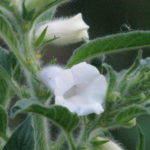 Bees love to crawl into them. Its a pretty plant and flower, so could easily be incorporated into an ornamental area. There are both black and white sesame seed plants; the white seed is really brownish as it has a seed coat. Sesame is also called benne seed. Once harvested sesame seeds should be stored in a dark cool place or refrigerated. The seeds can be used raw, or better still lightly toasted in a dry pan before sprinkling over your food. So very yum. Tip: sesame pods become tight as they dry and then split with force, throwing the seeds away from the plant. If you want to harvest any then watch the pods as they dry on the plant and then cut and hang in a paper bag to catch the seeds as they fly, or break open with your hands.
Bees love to crawl into them. Its a pretty plant and flower, so could easily be incorporated into an ornamental area. There are both black and white sesame seed plants; the white seed is really brownish as it has a seed coat. Sesame is also called benne seed. Once harvested sesame seeds should be stored in a dark cool place or refrigerated. The seeds can be used raw, or better still lightly toasted in a dry pan before sprinkling over your food. So very yum. Tip: sesame pods become tight as they dry and then split with force, throwing the seeds away from the plant. If you want to harvest any then watch the pods as they dry on the plant and then cut and hang in a paper bag to catch the seeds as they fly, or break open with your hands.Amaranth:
Amaranth (Amaranthus spp.) is a very tasty, easily grown seed that is considered a grain. It was a major food of the Aztecs, and almost completely destroyed by the Spanish after their conquest of that civilization. Amaranth was too sneaky though and survived. It is easily digestible, high in protein and full of other nutrition. It has wild as well as ornamental varieties, but all are edible (be sure what you are eating!) Love-lies-bleeding is the dramatic name of the long red tasseled kind.
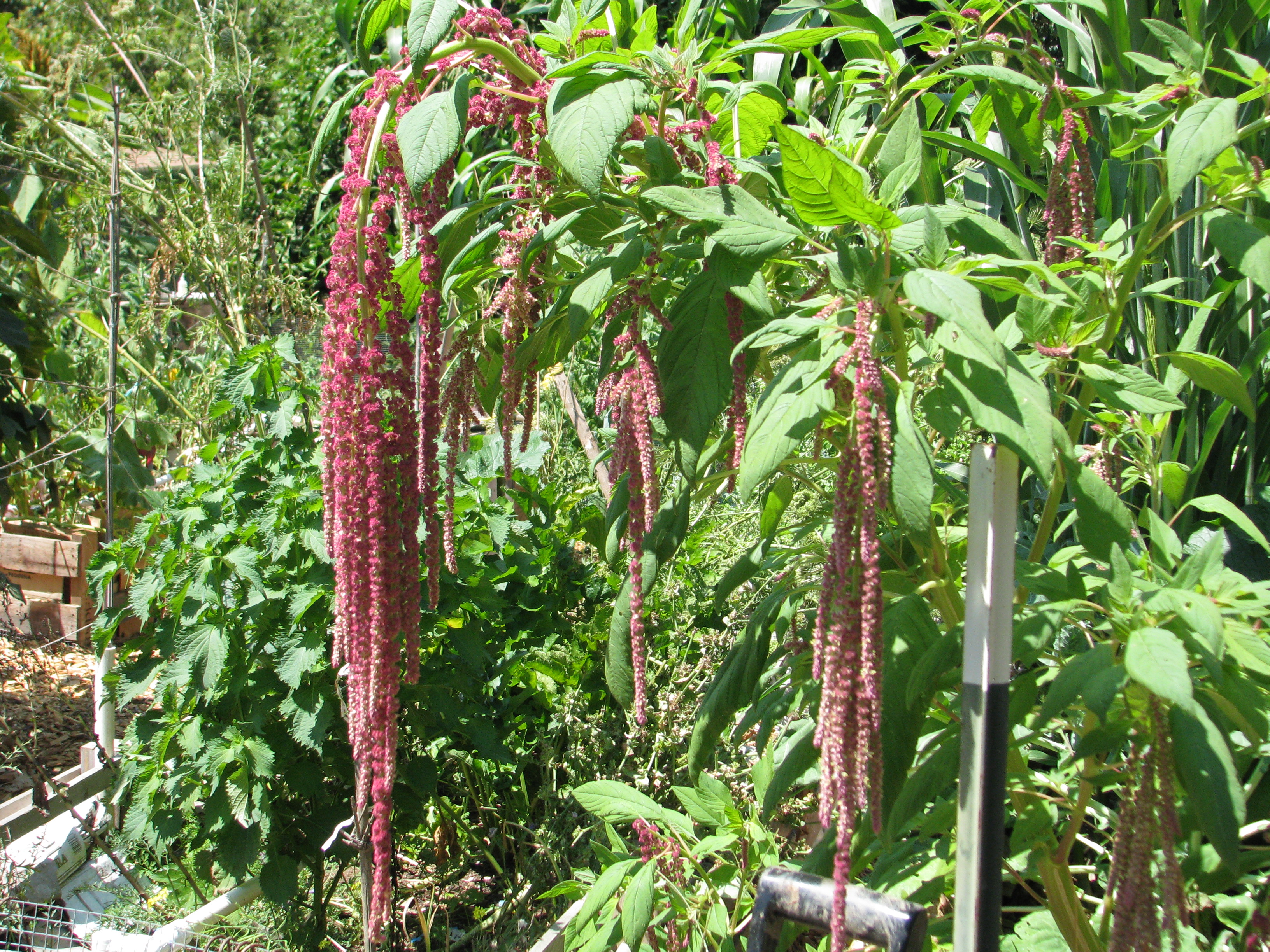

All are great for birds as well as humans.
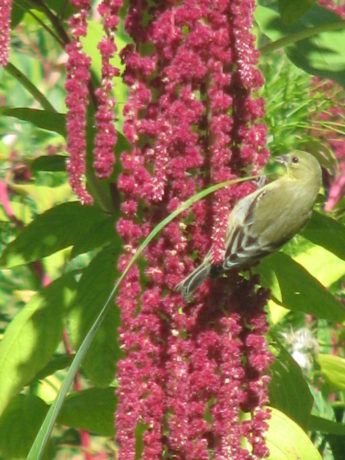
Pigweed and lambsquarter are its weedy relatives. All of them have edible leaves, although some varieties are more tasty than others. Older leaves are better cooked. The tall varieties can grow 8′ tall or so, may need staking, and make good shade plants for others that need sun protection. When you start to see birds on the flowers then the seed should be ready. Another way to check is to gently rub the flowers between your fingers and see if seeds come off as well as the petals. If so, then over a clean, dry bucket rub the cut flowers between your fingers. Winnow the chaff away over a mesh screen or in the wind, or by gently blowing it away from the seed. Now you need to completely dry the seed in the sun, and then store in a dry, dark cool place. Use within six months for best results.
Poppy seeds:
 No, not the opium kind, the lemon-poppy seed cake kind, although both are varieties of Papaver somniferum. Look for seeds for Breadseed Poppy varieties. This is another beautiful ornamental with striking seed pods that can be dried and used in flower arrangements. Poppies enjoy poor, disturbed soil. The seeds are tiny so need to be exposed to daylight to germinate. The flowers are beautiful; frail and feminine. The seed pods are rounded and have tiny holes at the top where the seeds come out of, so be careful when you are working around the drying pods or you’ll scatter seeds. Or just let some drop and they will come up next year.
No, not the opium kind, the lemon-poppy seed cake kind, although both are varieties of Papaver somniferum. Look for seeds for Breadseed Poppy varieties. This is another beautiful ornamental with striking seed pods that can be dried and used in flower arrangements. Poppies enjoy poor, disturbed soil. The seeds are tiny so need to be exposed to daylight to germinate. The flowers are beautiful; frail and feminine. The seed pods are rounded and have tiny holes at the top where the seeds come out of, so be careful when you are working around the drying pods or you’ll scatter seeds. Or just let some drop and they will come up next year.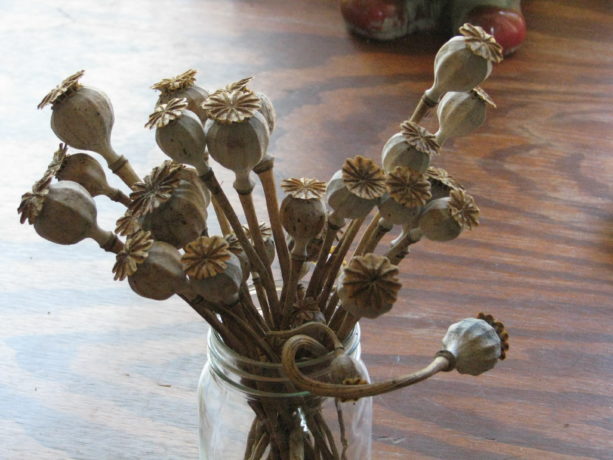
 Allow the pods to dry on the stem and then carefully cut. Shake the seeds out into a jar and store in a cool, dark place. Use raw or lightly toasted. Be sure not to eat them before taking a drug test, or you’ll test positive.
Allow the pods to dry on the stem and then carefully cut. Shake the seeds out into a jar and store in a cool, dark place. Use raw or lightly toasted. Be sure not to eat them before taking a drug test, or you’ll test positive.Basil seeds:
 Basil seeds aren’t well known for their culinary use in the US, but they are nutritious and useful. The seeds of the sweet basil plant (Ocimum basilicum) not Holy Basil (Ocimum tenuiflorum), when soaked make the water gelatinous, as chia seeds do, so are used to thicken drinks and foods. You don’t have to soak basil seeds to use them though. The flowers are delightfully edible as well. Use them for additional flavor and nutrition by tossing them raw into salads, salad dressing, breads, or just about anything. Letting some of the basil plant go to seed (while pinching other stems to keep it leafing) will attract small native pollinators to your garden. When the flowers dry, the seeds are ready to be shaken off into a clean, dry bucket or bag.
Basil seeds aren’t well known for their culinary use in the US, but they are nutritious and useful. The seeds of the sweet basil plant (Ocimum basilicum) not Holy Basil (Ocimum tenuiflorum), when soaked make the water gelatinous, as chia seeds do, so are used to thicken drinks and foods. You don’t have to soak basil seeds to use them though. The flowers are delightfully edible as well. Use them for additional flavor and nutrition by tossing them raw into salads, salad dressing, breads, or just about anything. Letting some of the basil plant go to seed (while pinching other stems to keep it leafing) will attract small native pollinators to your garden. When the flowers dry, the seeds are ready to be shaken off into a clean, dry bucket or bag. Coriander:
You probably know cilantro or Chinese parsley as the love-it-or-hate-it herb found in salsas and many Mexican or East Indian dishes. Cilantro (Coriandrum sativum) seed is called coriander. Coriander seed is usually used ground and used in curry mixtures, soups and meat dishes. It is an historical herb, being used in ancient India, China and Egypt. It has a kind of lemony taste that is unique.
Celery seeds:
Celery (Apium graveolens) seeds are marvelous savory additions to soups, particulary tomato. I grind it up in a mortar and throw it in soups and stews to round out the flavor. We grew celery one year -although I have no photos of it – and because of the warm weather the celery stalk flavor was quite strong. However the seeds were delightful. Celery is a cool-season plant and the stalks should be covered to keep pale green and mild flavored. Or just let them grow for the seed. There is a wild variety that grows in marshlands, but please be very careful if you harvest from it because it looks similar to the very poisonous water hemlock (Cicuta).
Fennel:
If you’ve sipped ouzo, aguardiente or anisette, you’ve tasted the seeds of the fennel plant. Fennel (Foeniculum vulgare) is the brother of anise, and both have escaped gardens to be a troublesome weed. Fennel bulbs are absolutely amazing lightly steamed, and then baked in vegan butter and topped with vegan Parmesan. The leaves are fantastic stirred into eggs or salads, and the seeds are incredible flavorings for baked goods, candies and obviously alcohols. Miranda candied fennel seeds for me. They have been used to try and mask cigarette or alcohol breath, but really… who is kidding who? They do make a great breath freshener chewed. The plants are frondy, tall and have pretty umbels of flowers that native insects love.
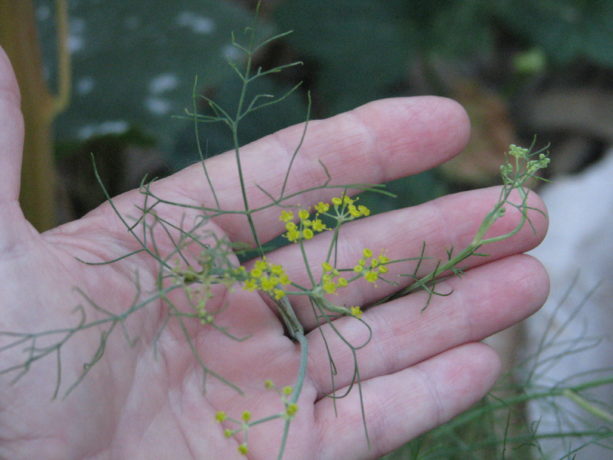 Grow some for the bulbs (protect them from gophers!) and let others go to seed. Cut and hang upside down to collect the seed in a bag or else you’ll have fennel everywhere. And that may not be a bad thing.
Grow some for the bulbs (protect them from gophers!) and let others go to seed. Cut and hang upside down to collect the seed in a bag or else you’ll have fennel everywhere. And that may not be a bad thing.Sunflower
I don’t know anyone who isn’t familiar with sunflower seeds; certainly the shells were routinely spit out all over campus as a cool snack when I was in college and probably still are. At least they are biodegradable. Sunflowers (Helianthus annuus) are one of the few edible seeds native to North America, and they are protected in an attractive hull. Some varieties are small, multi stemmed and ornamental, and others are grown for their fabulously large seed heads. Birds love eating the green leaves as part of their healthy diet, so grow extra. The seed heads should be left to dry on the stalk, and then cut and shaken to de-seed. Good pollination is important to produce seeds with good ‘meat’ inside.
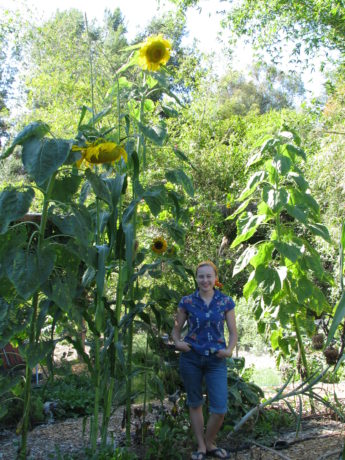
Eat them raw or toasted; they are full of good things for your body. (Miranda is 5’1″ in the photo, not tiny. I like that one of the heads seems to be checking her out.)
Dill
Dill (Anethum graveolens) is another double happiness plant. The leaves are tremendous used fresh or dried, and the seeds are fantastic as well. We use the whole seed heads in our dill pickle recipe. It goes well with fish, or in our case vegan fish. Grind them or use them whole, but definitely stir them into sauces, soups, dressings, dips, etc. Dill, like fennel, will reseed, but that isn’t a bad thing. They look pretty much like the fennel plant above.
Caraway:
We’ve grown caraway (Carum carvi) in the past, but I have no picture for you. Just refer to the photo above of the fennel and it will be close, as they are in the carrot family. You’ll find caraway in rye breads, liquors and cheeses, and in some areas the young leaves and roots are also eaten. They are dried and harvested just like the fennel and dill.
There are other seeds that we haven’t grown. We’ve tried to grow cumin and annatto seeds, but have failed to make them germinate; there is always next year. Some seeds are so small, such as chia, that you’d have to grow a lot of plants to harvest just a little seed. Seeds are such a vital nutritional and flavorful part of our diets, and so fun to grow that everyone should sprinkle edible seed-bearing plant seeds throughout their garden. As seeds dry and keep fresher longer than dried leaves (such as basil or dill), that fresh taste of the garden can last through until next year’s harvest time again.
